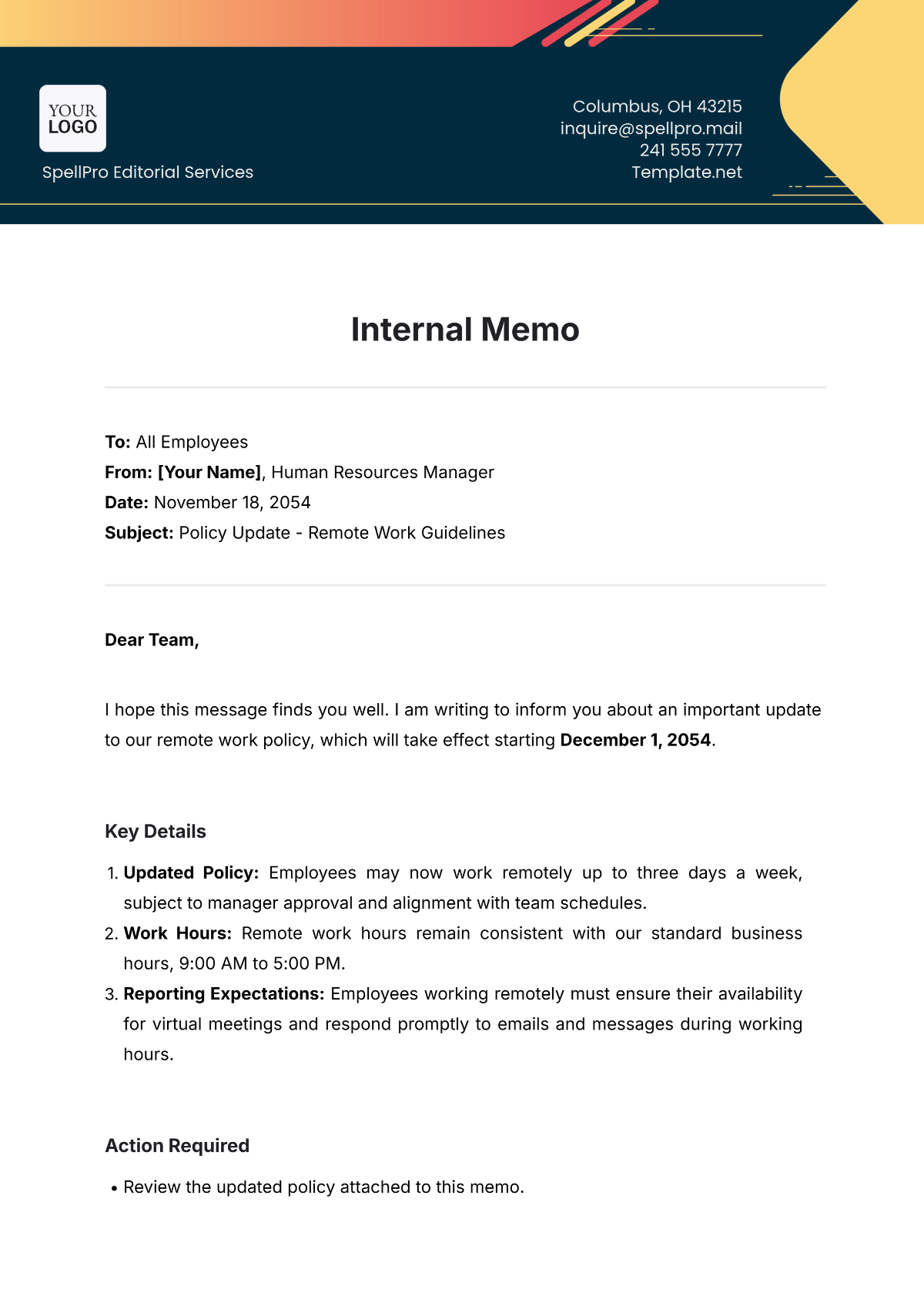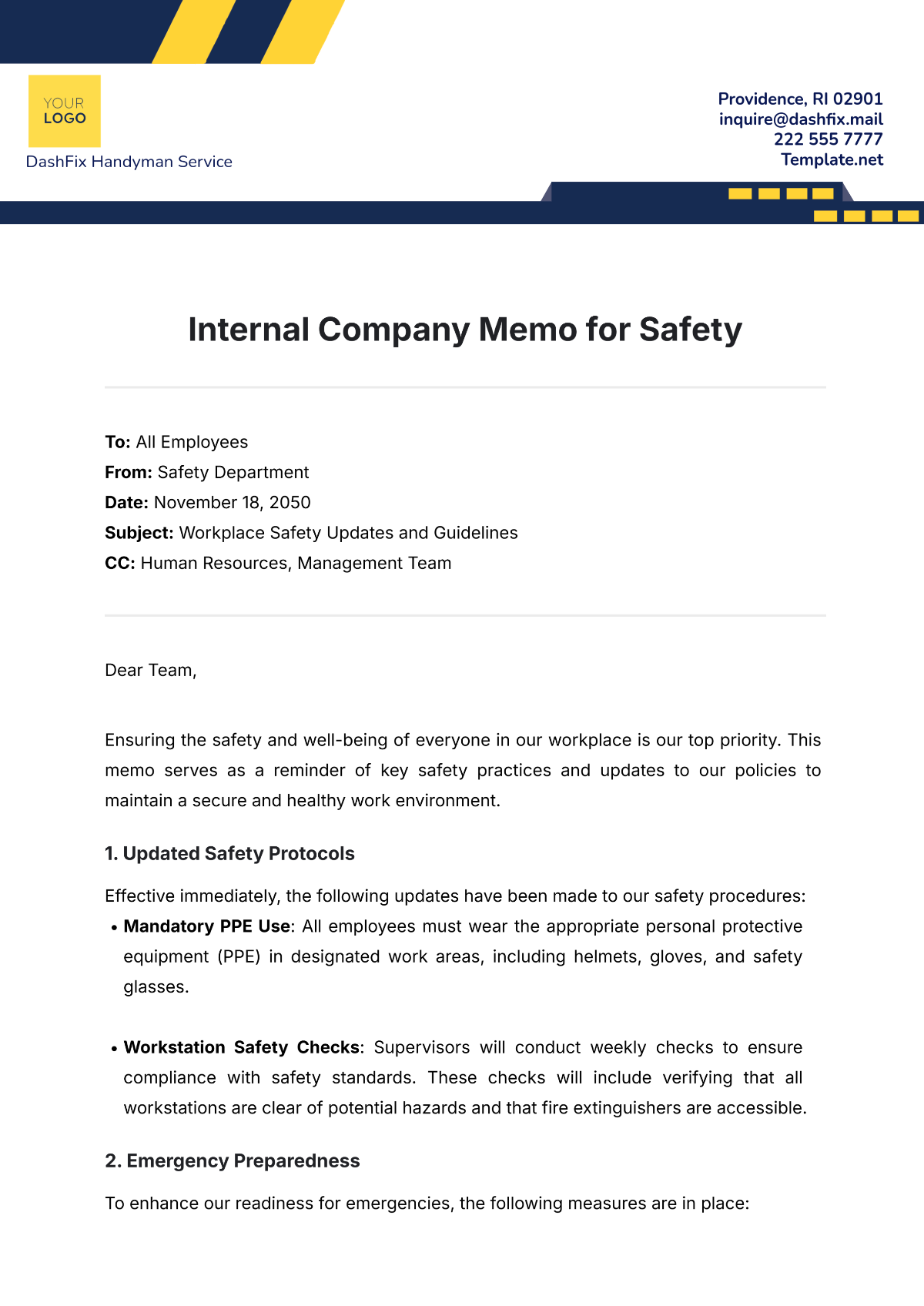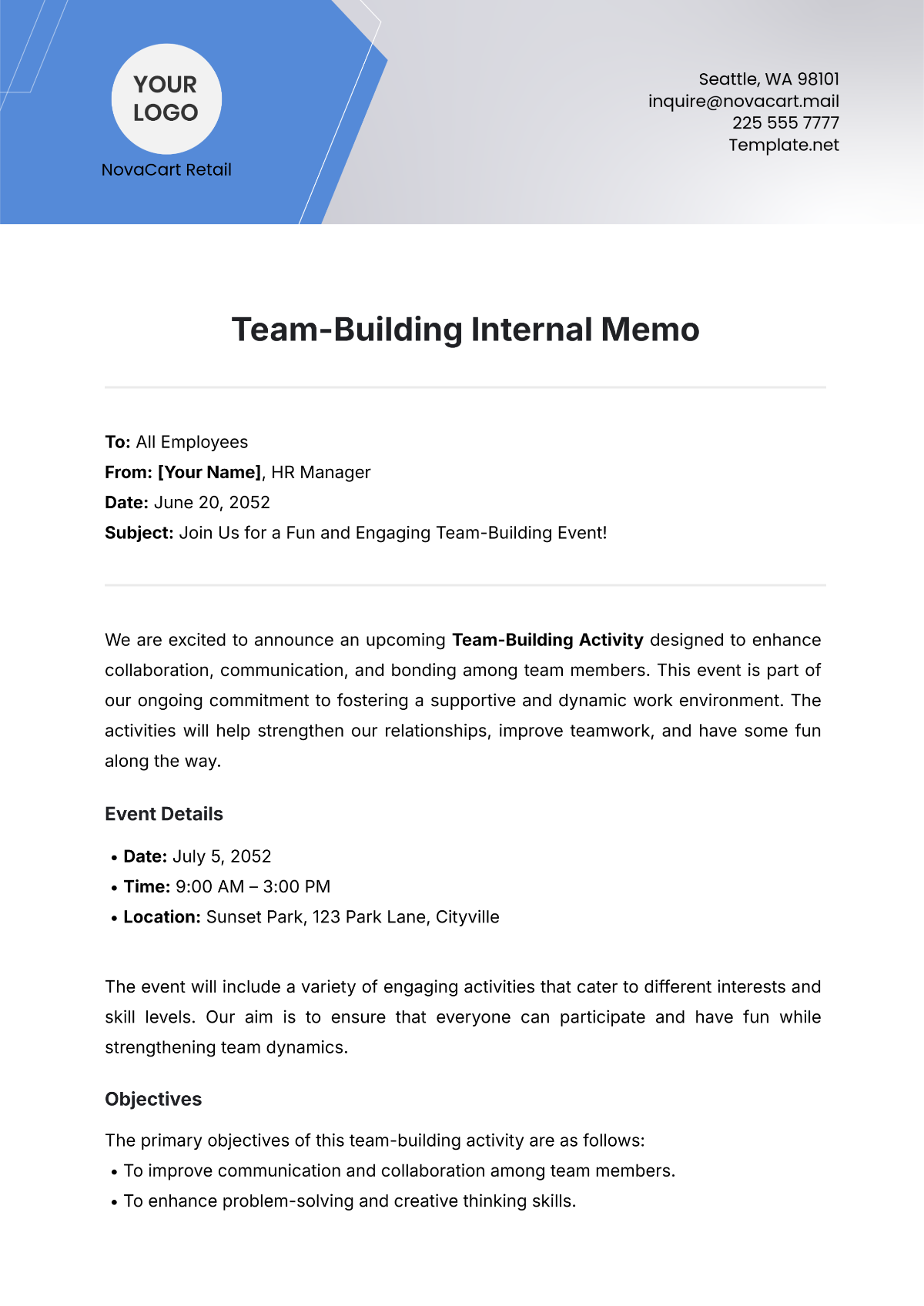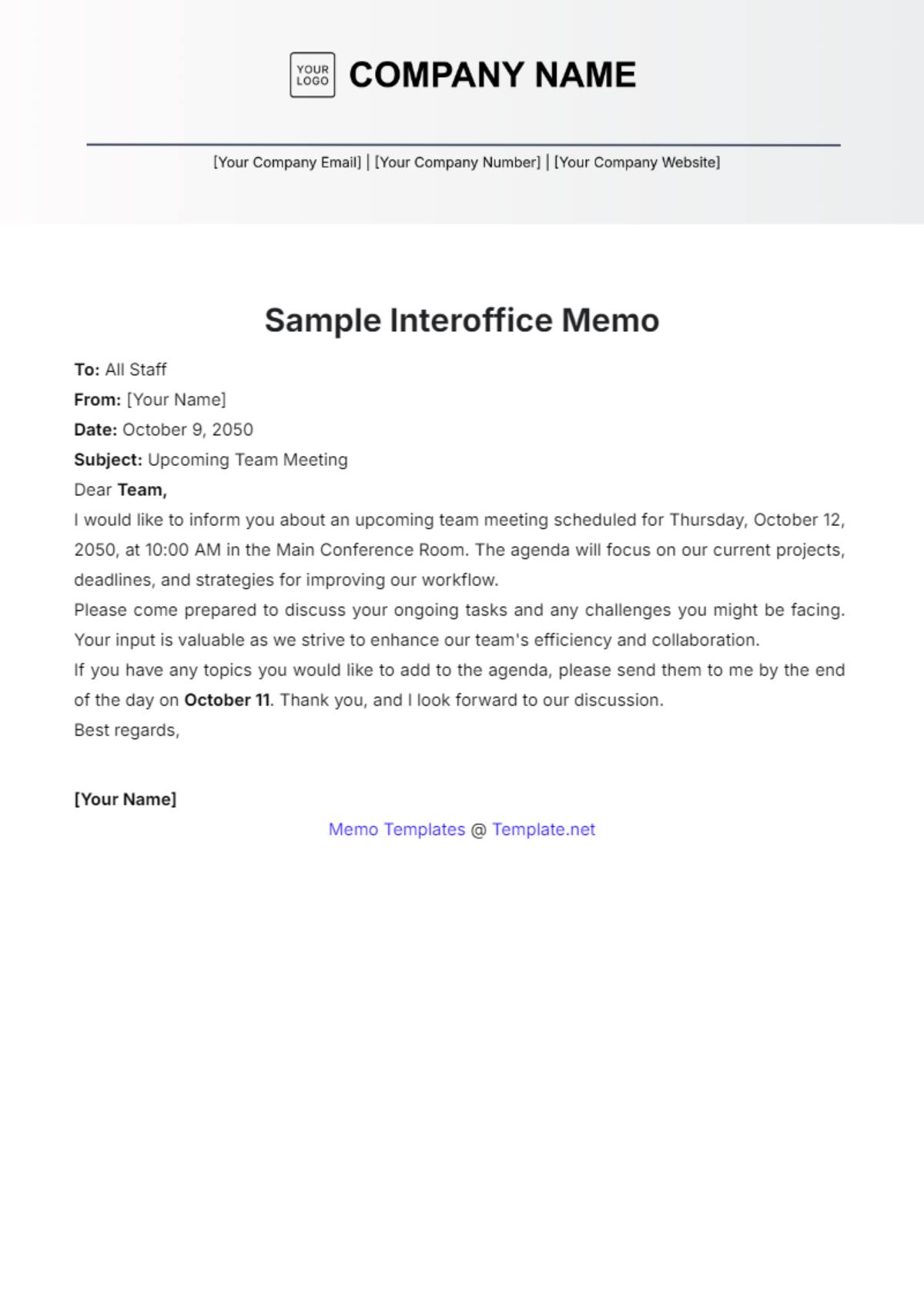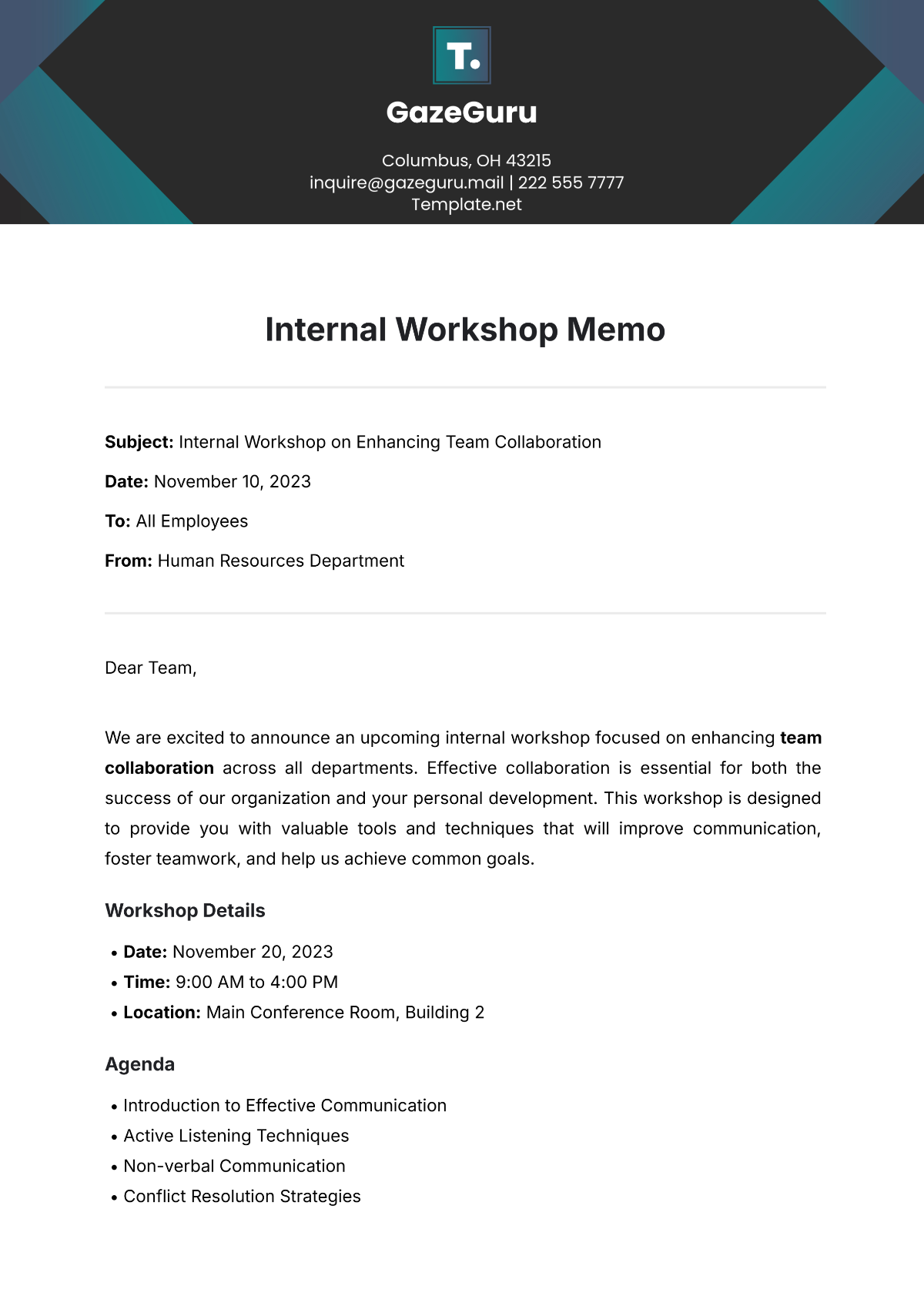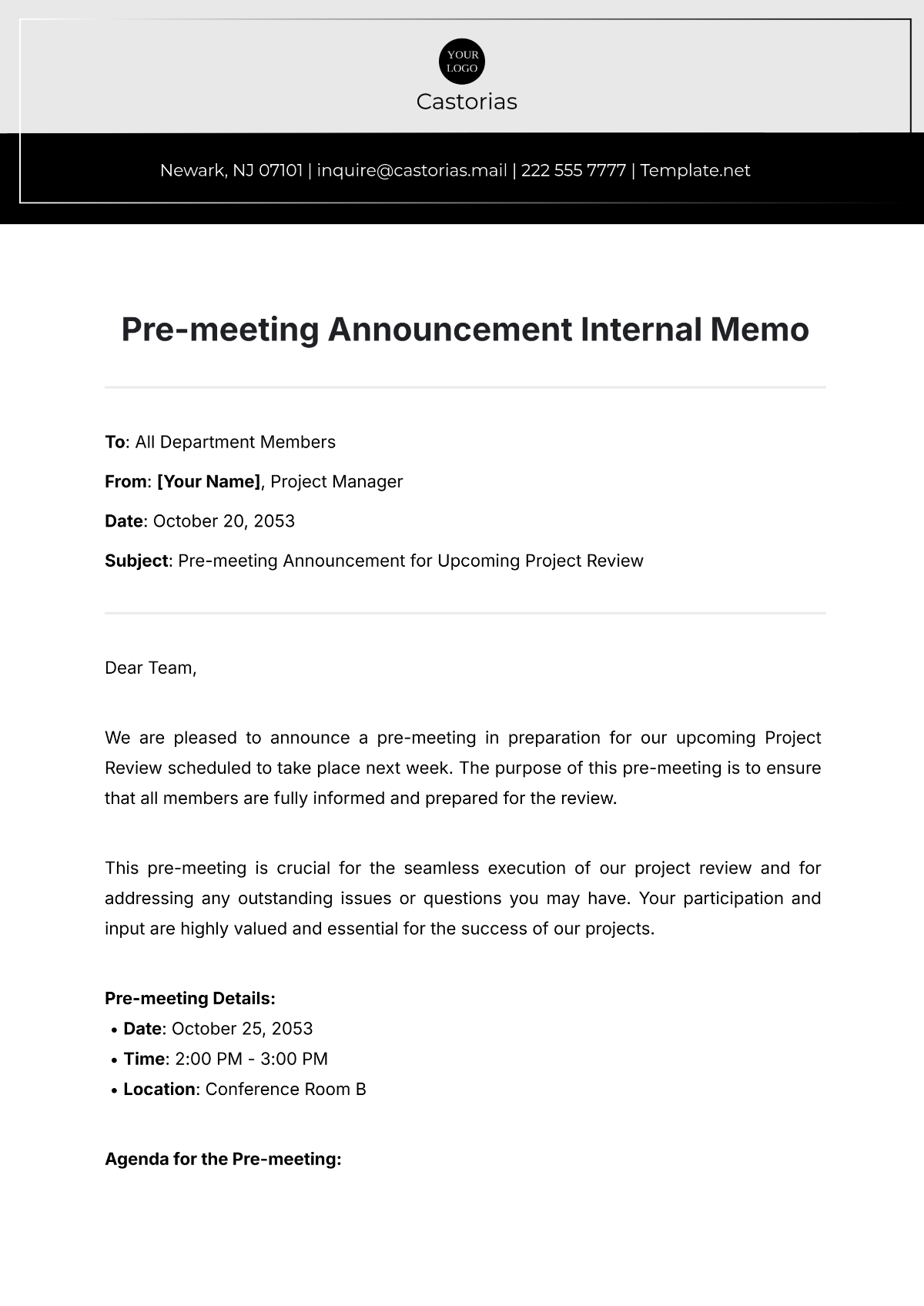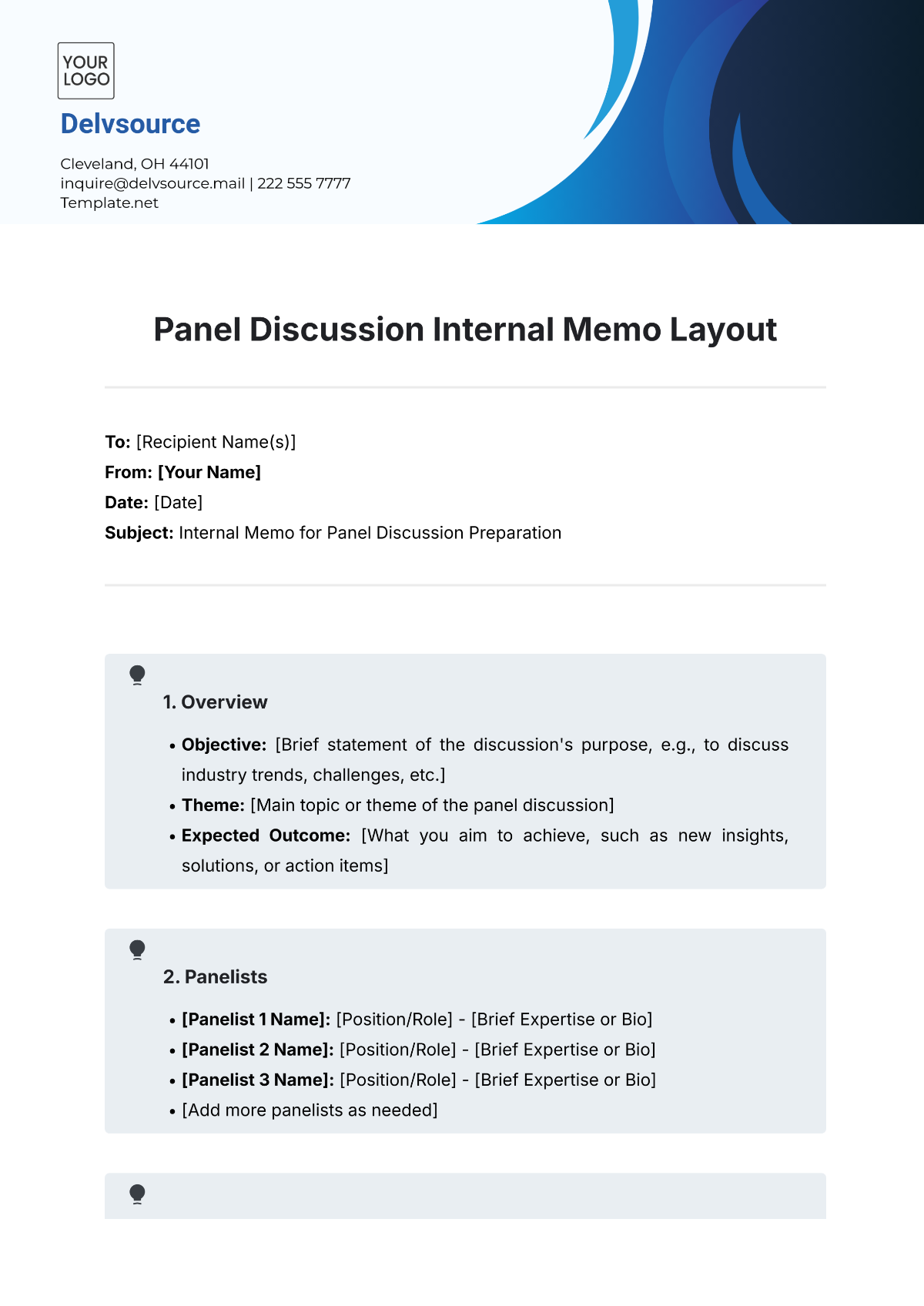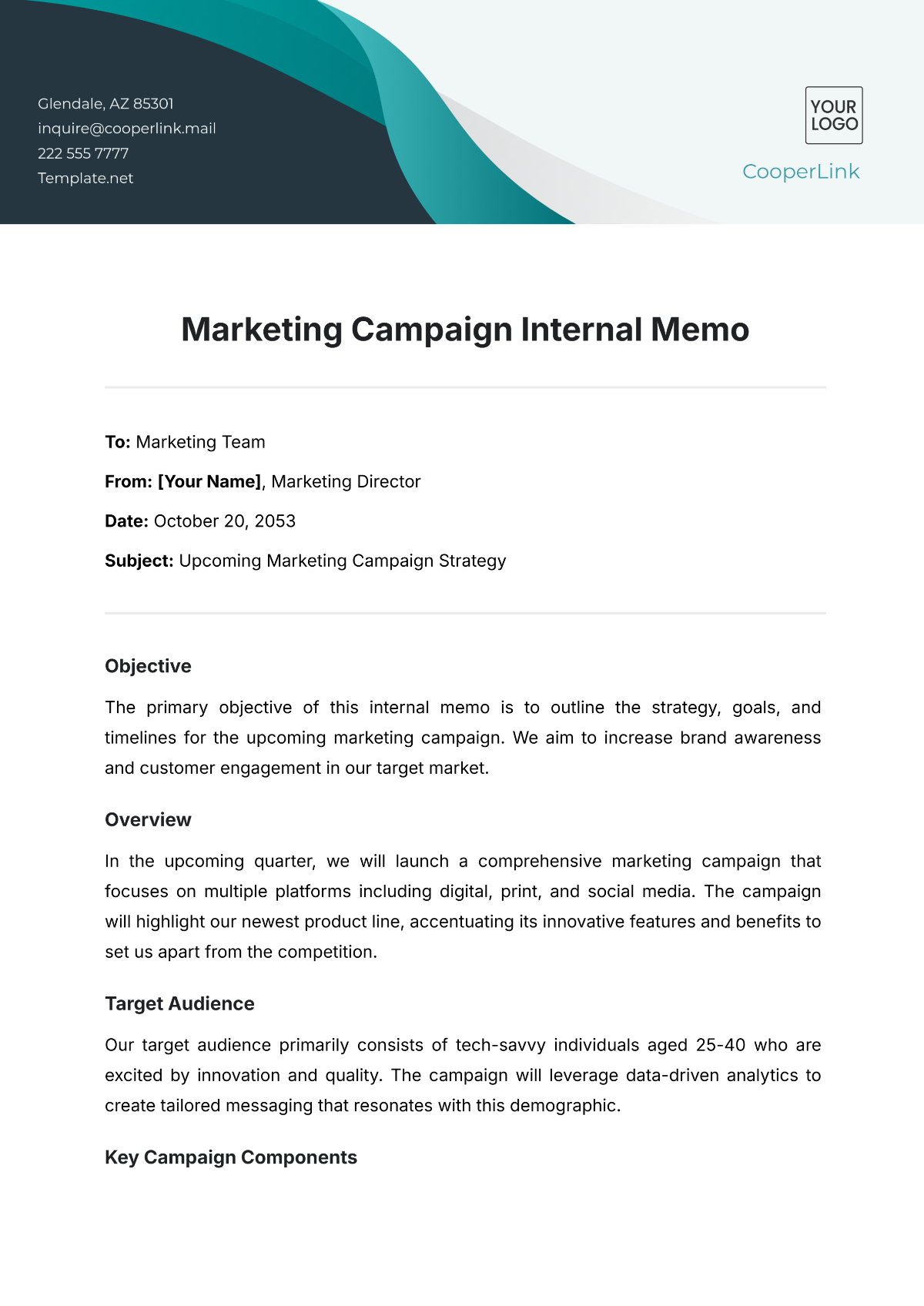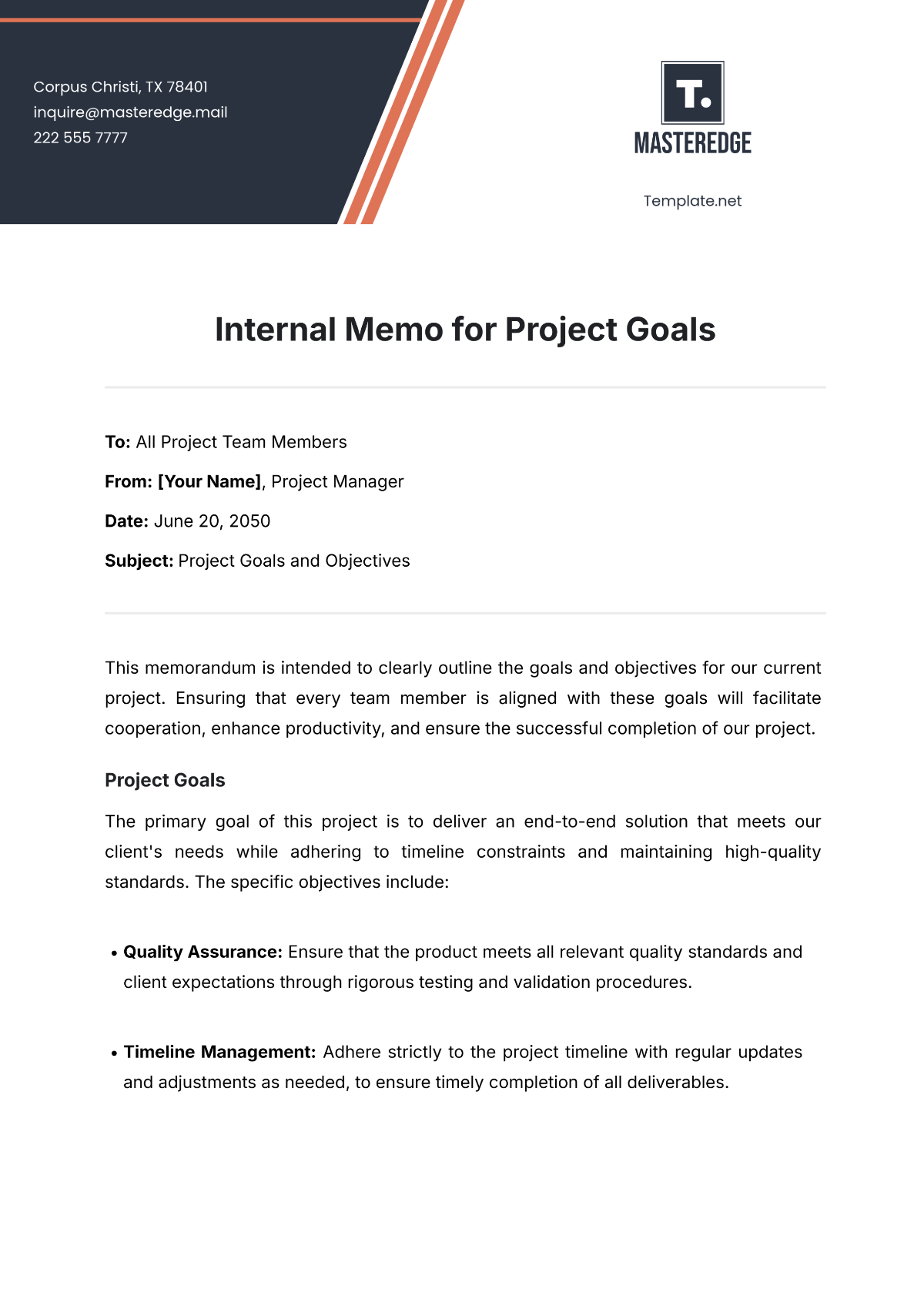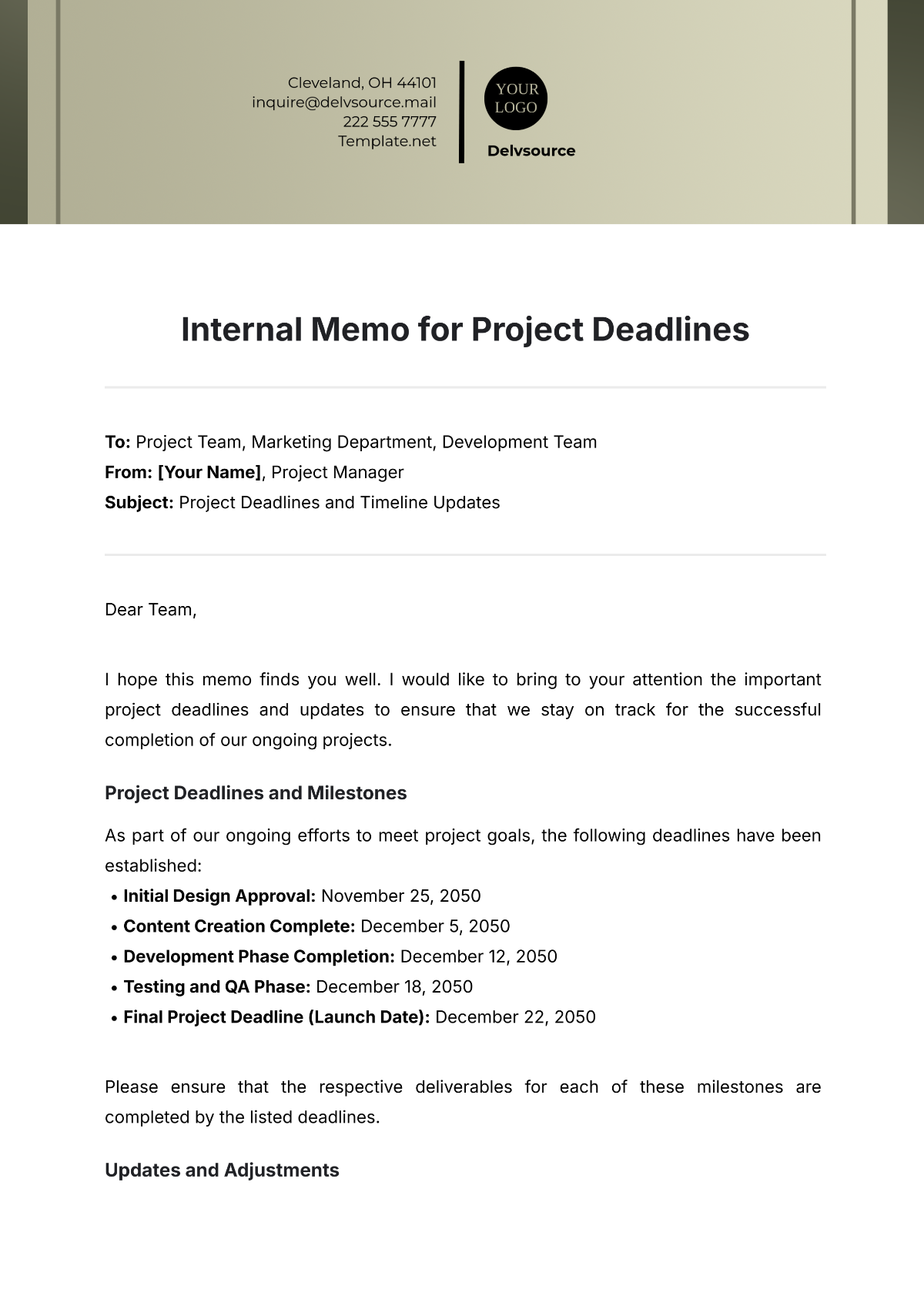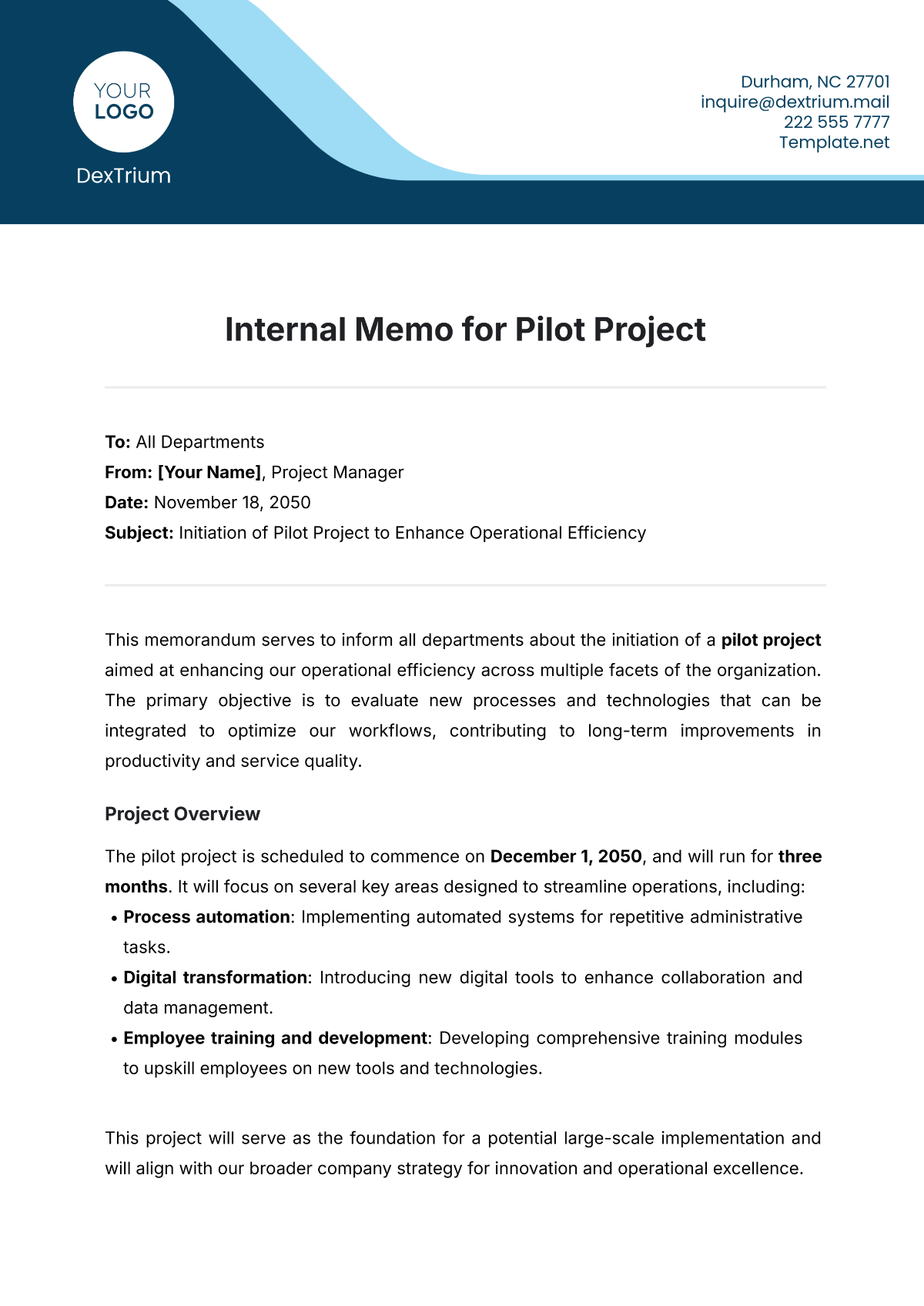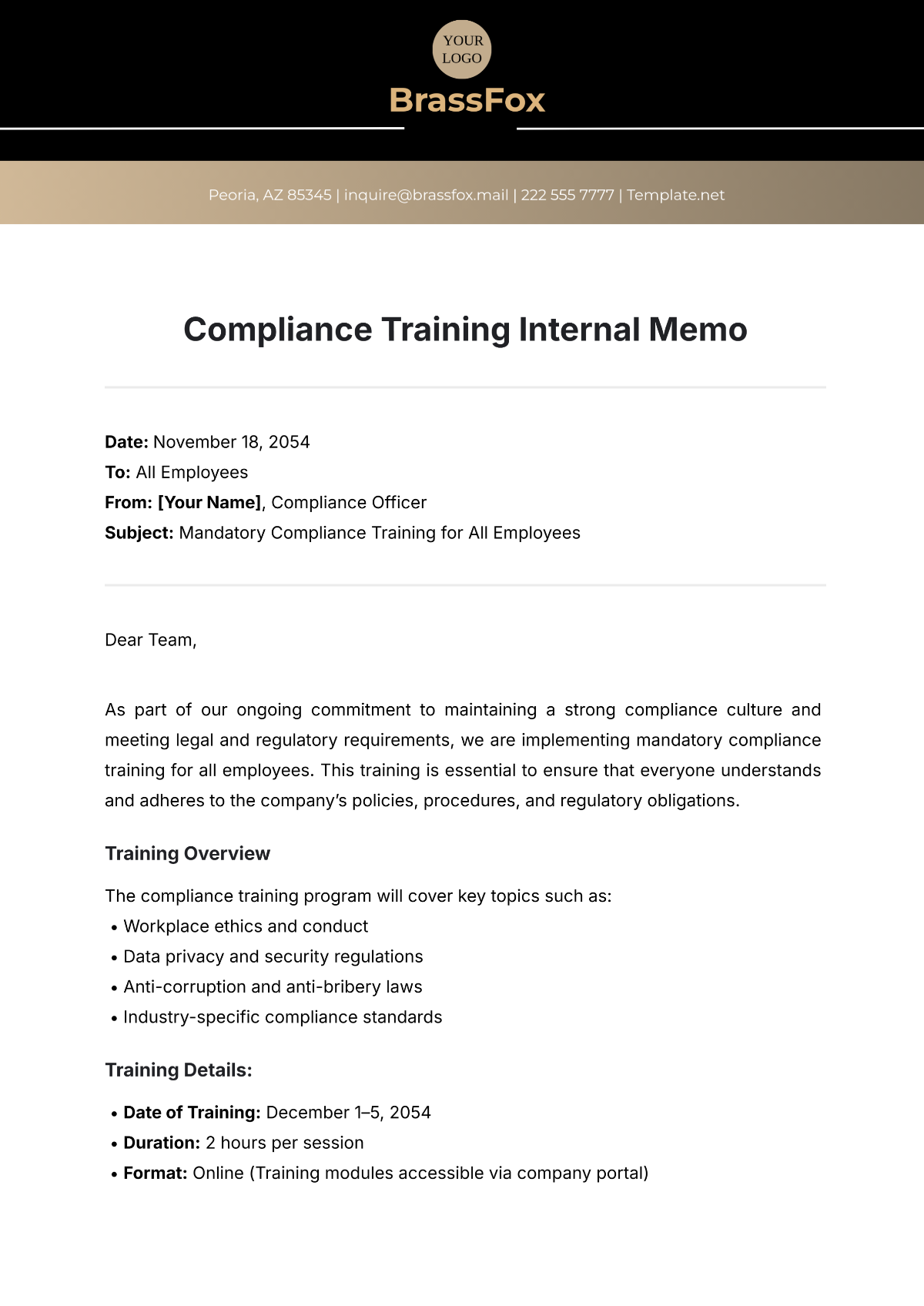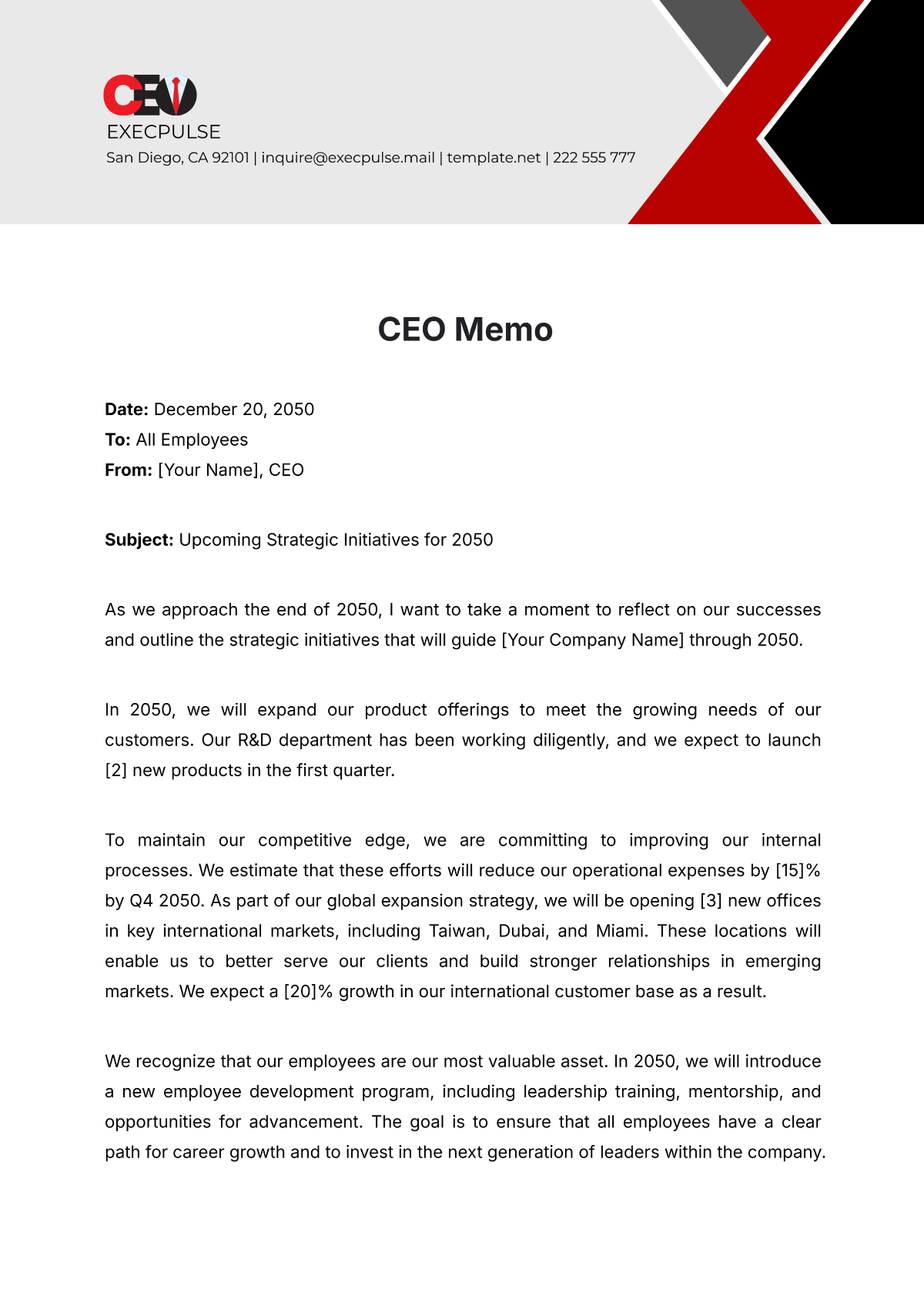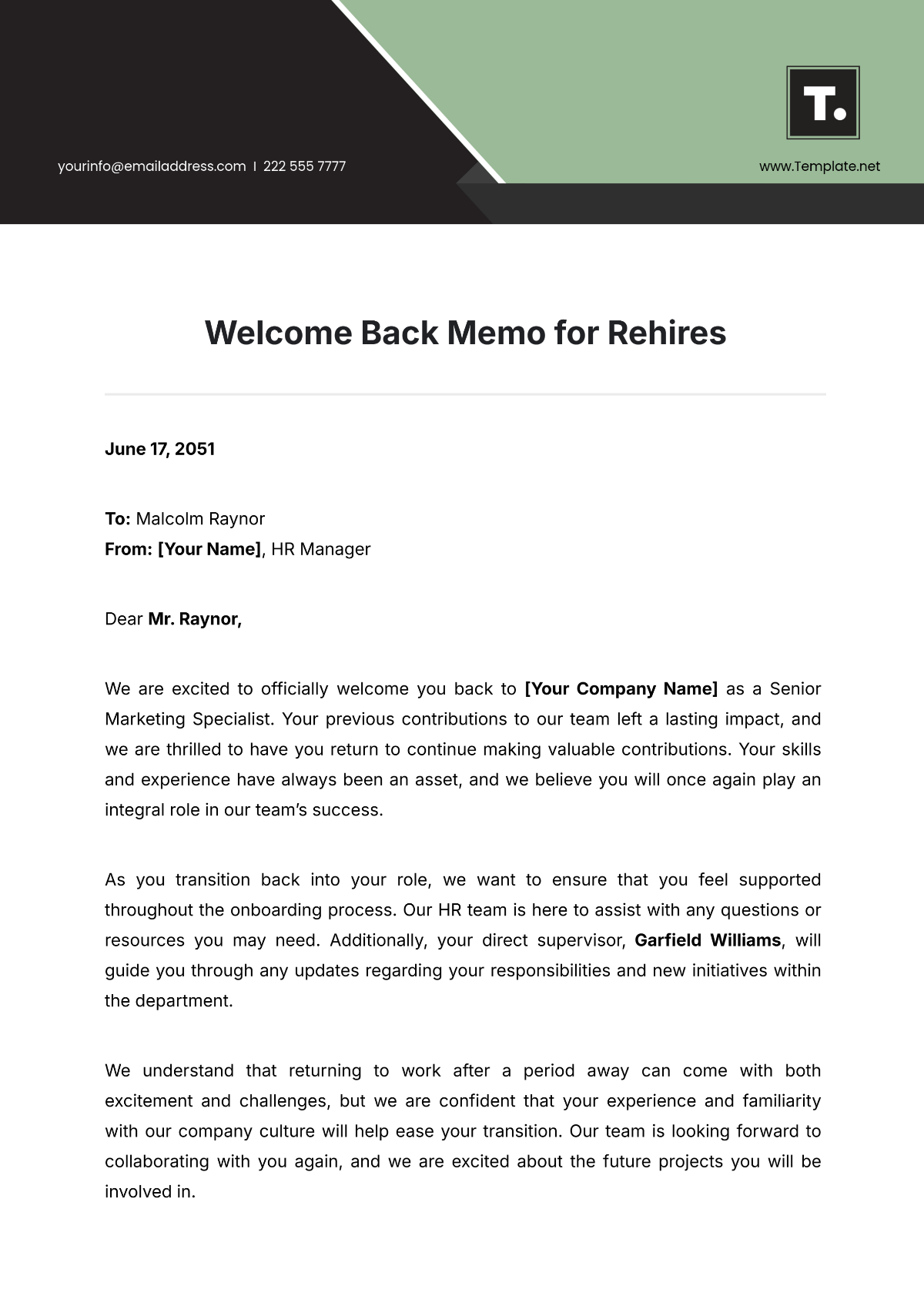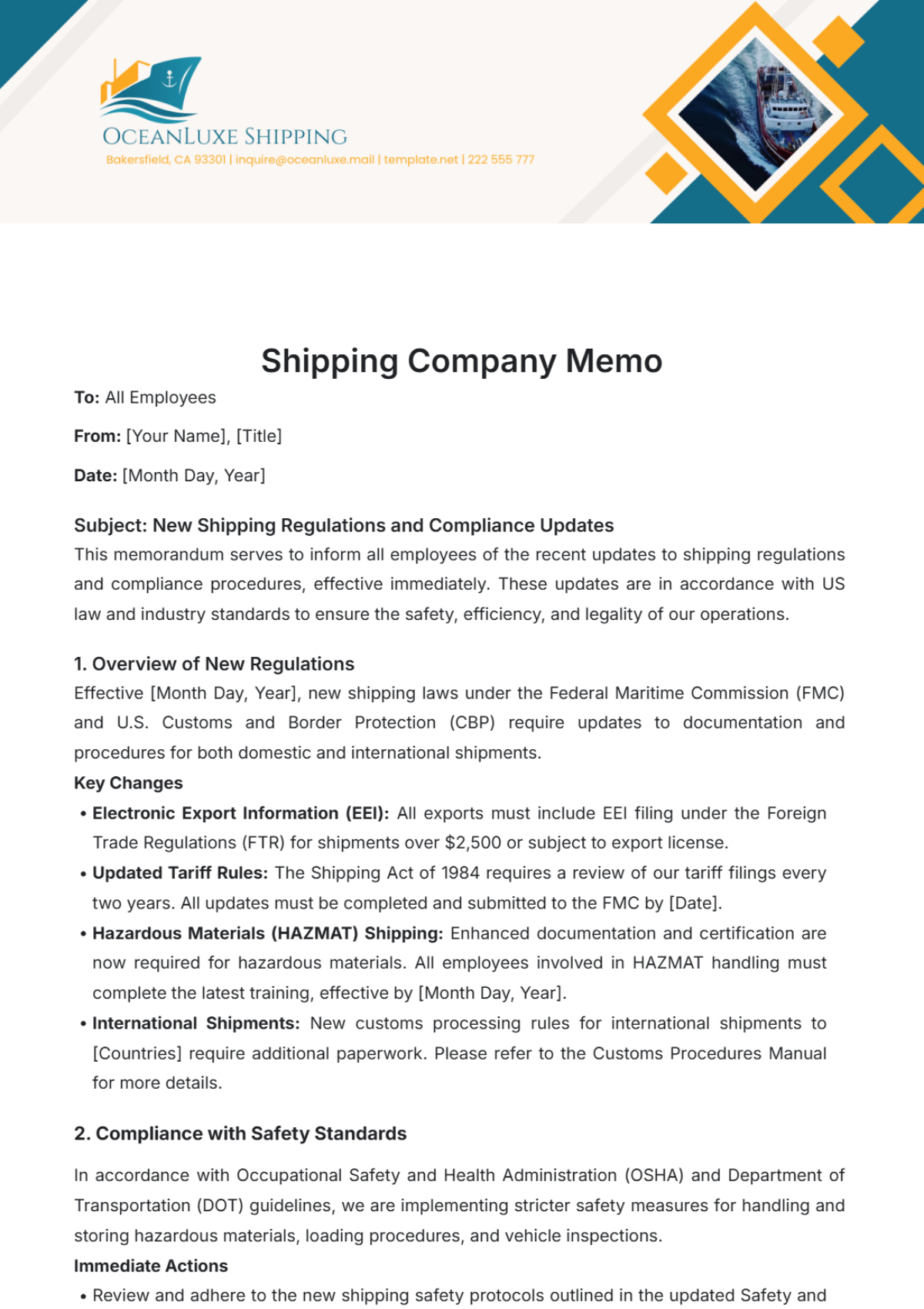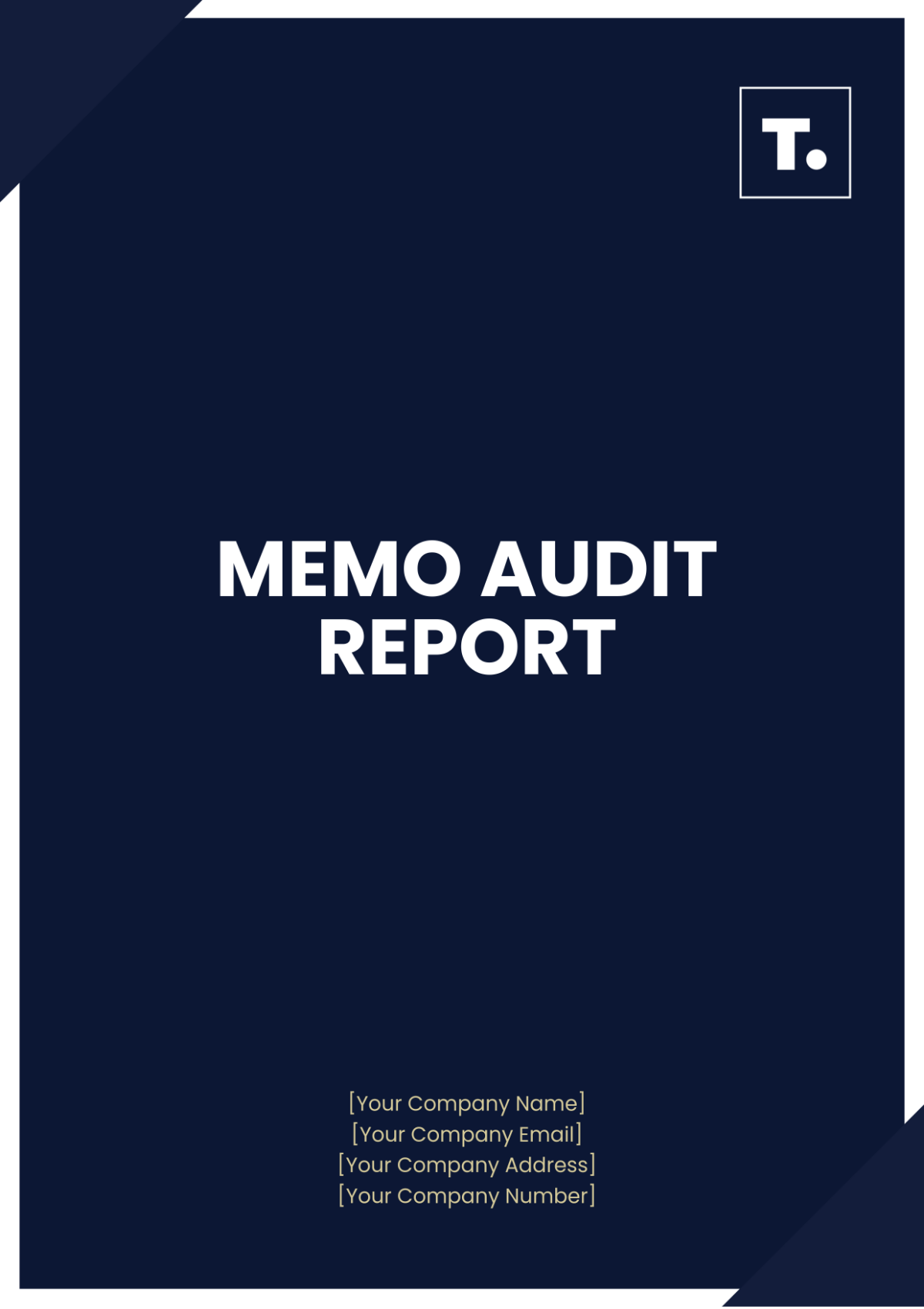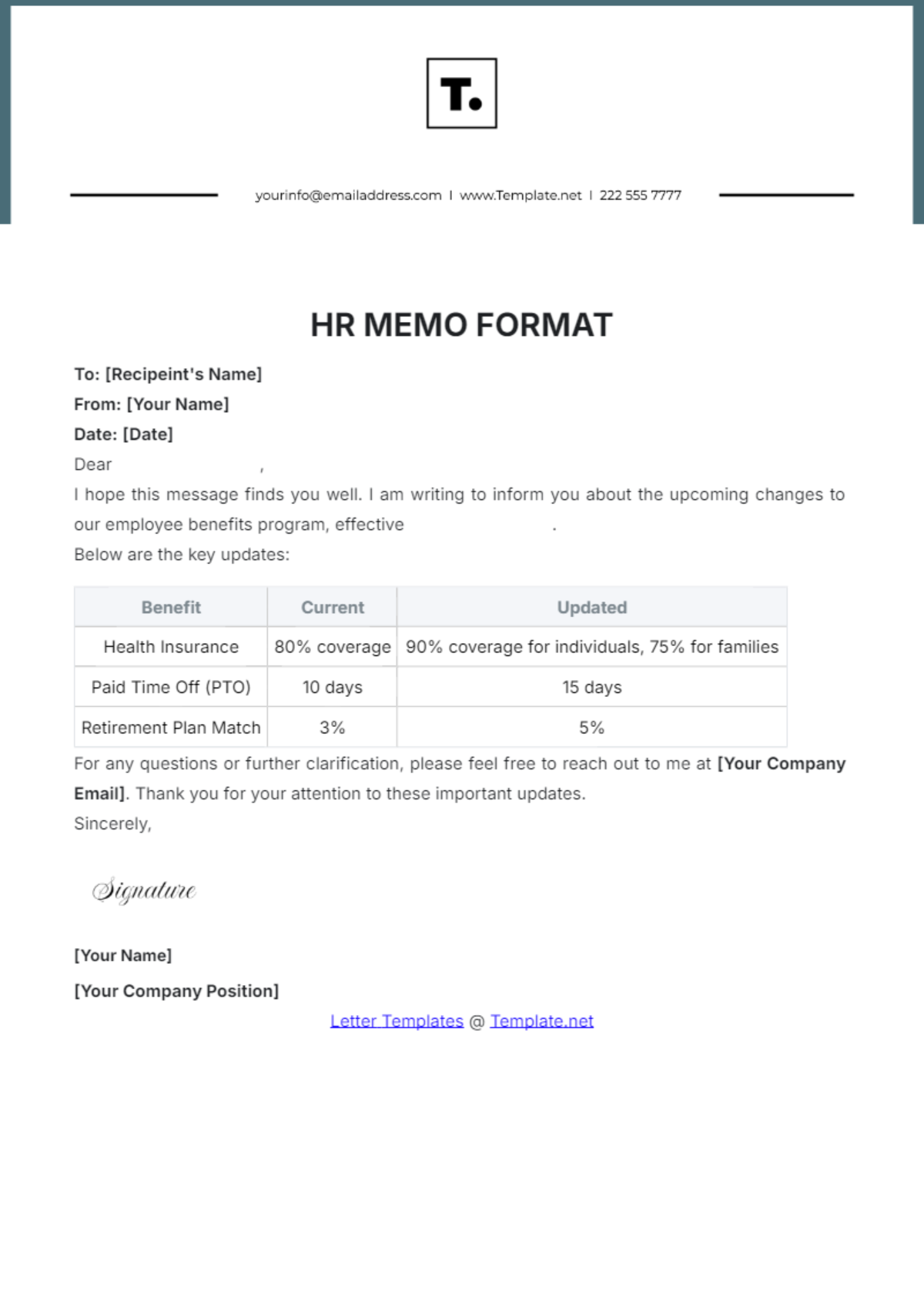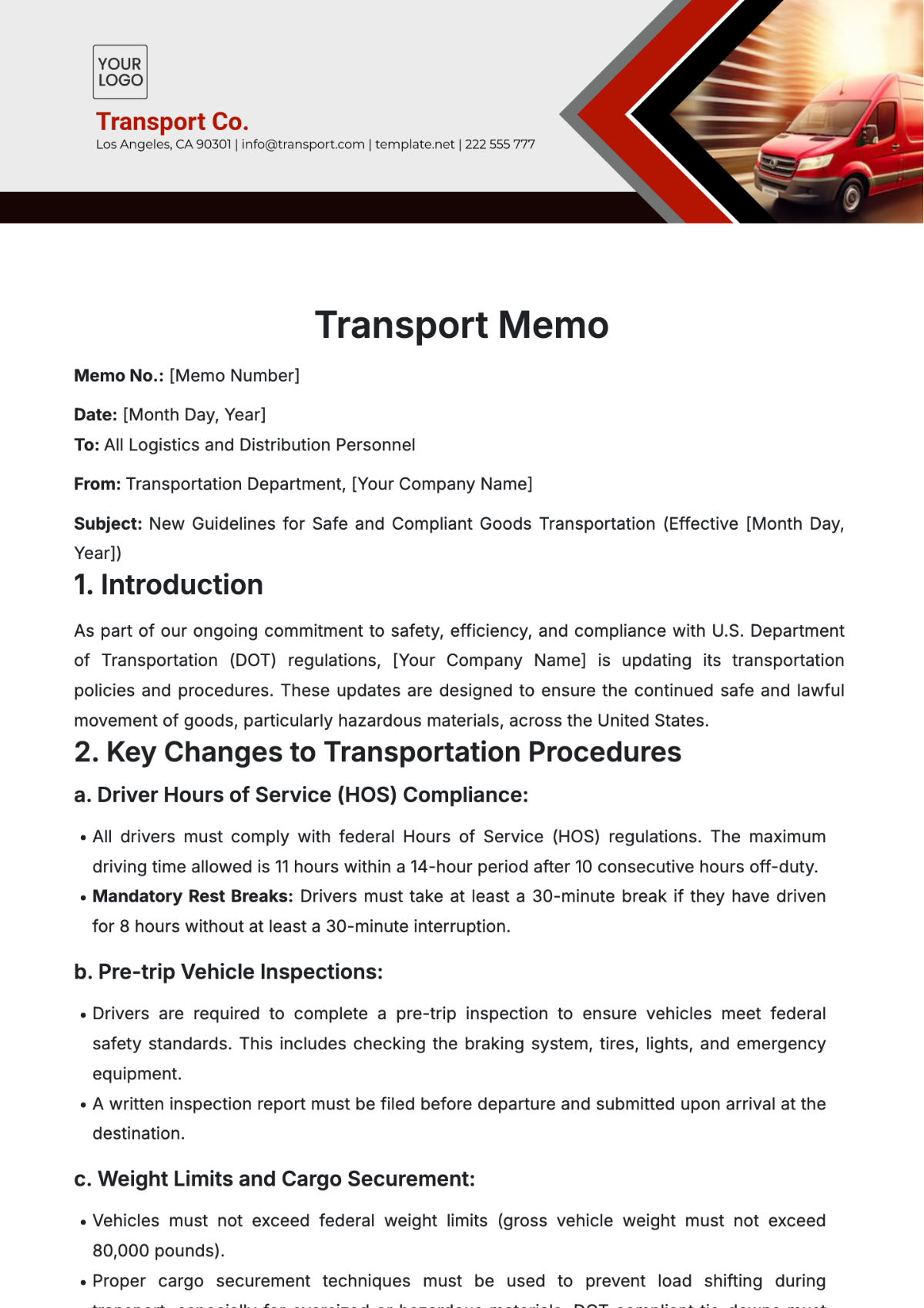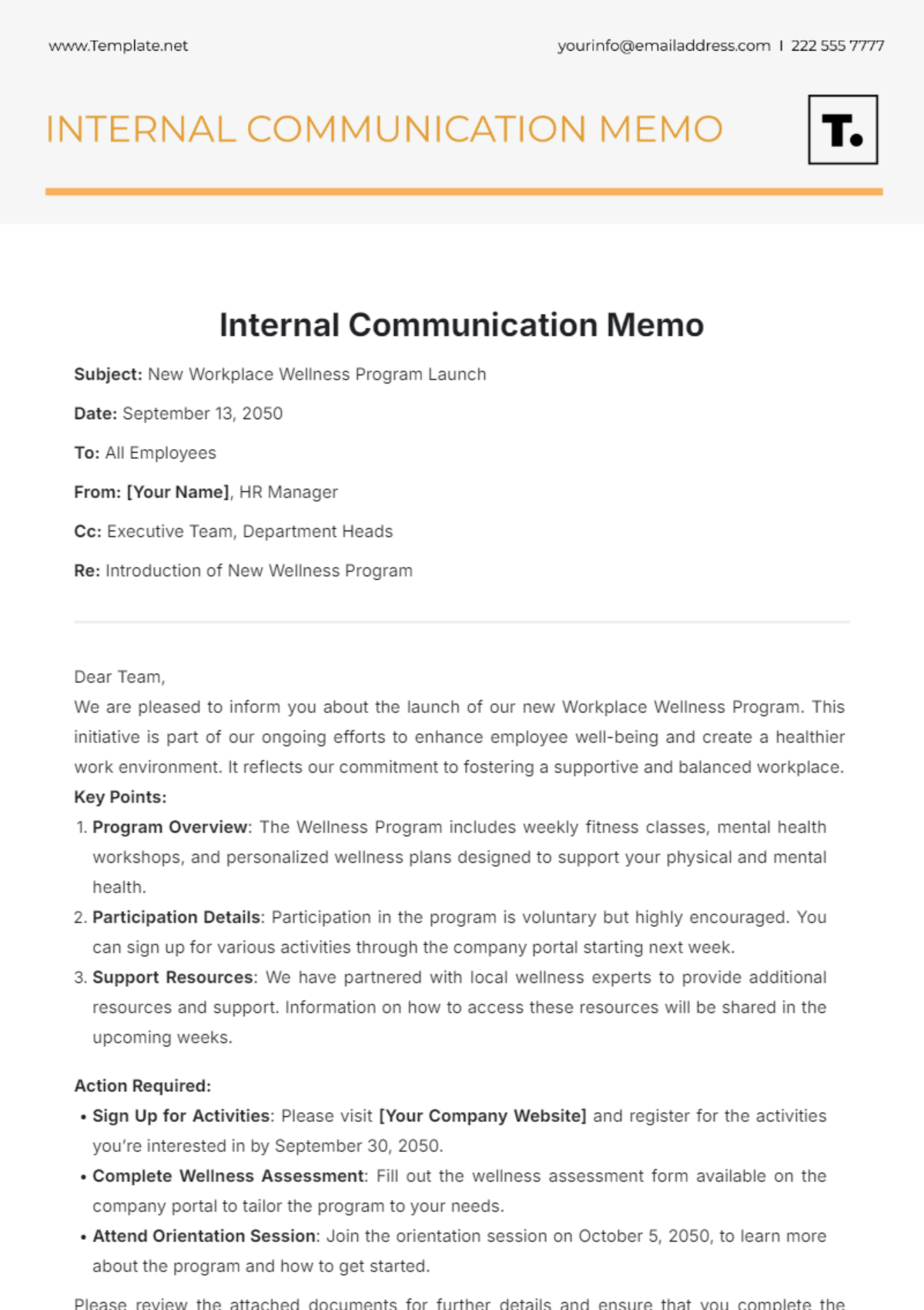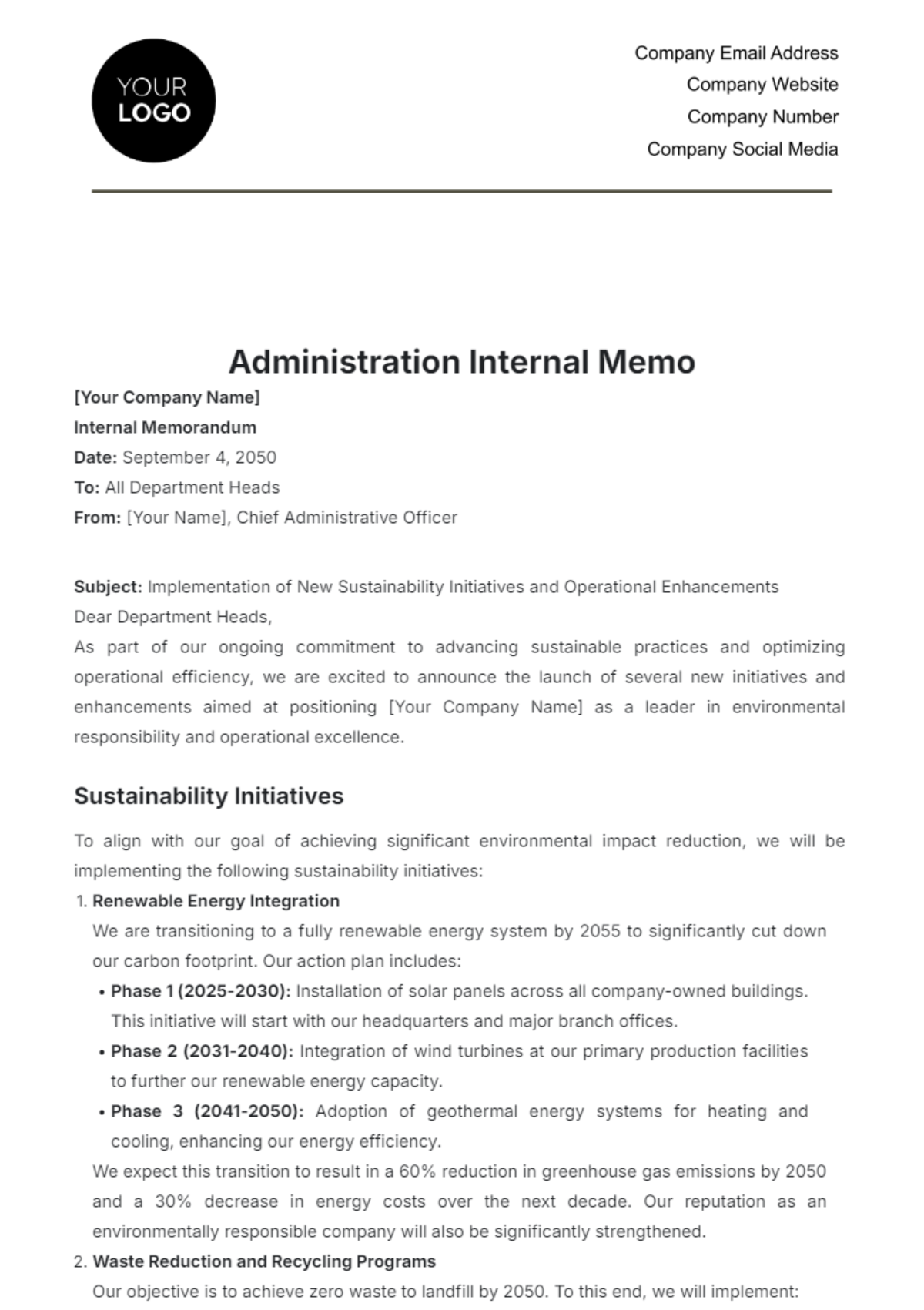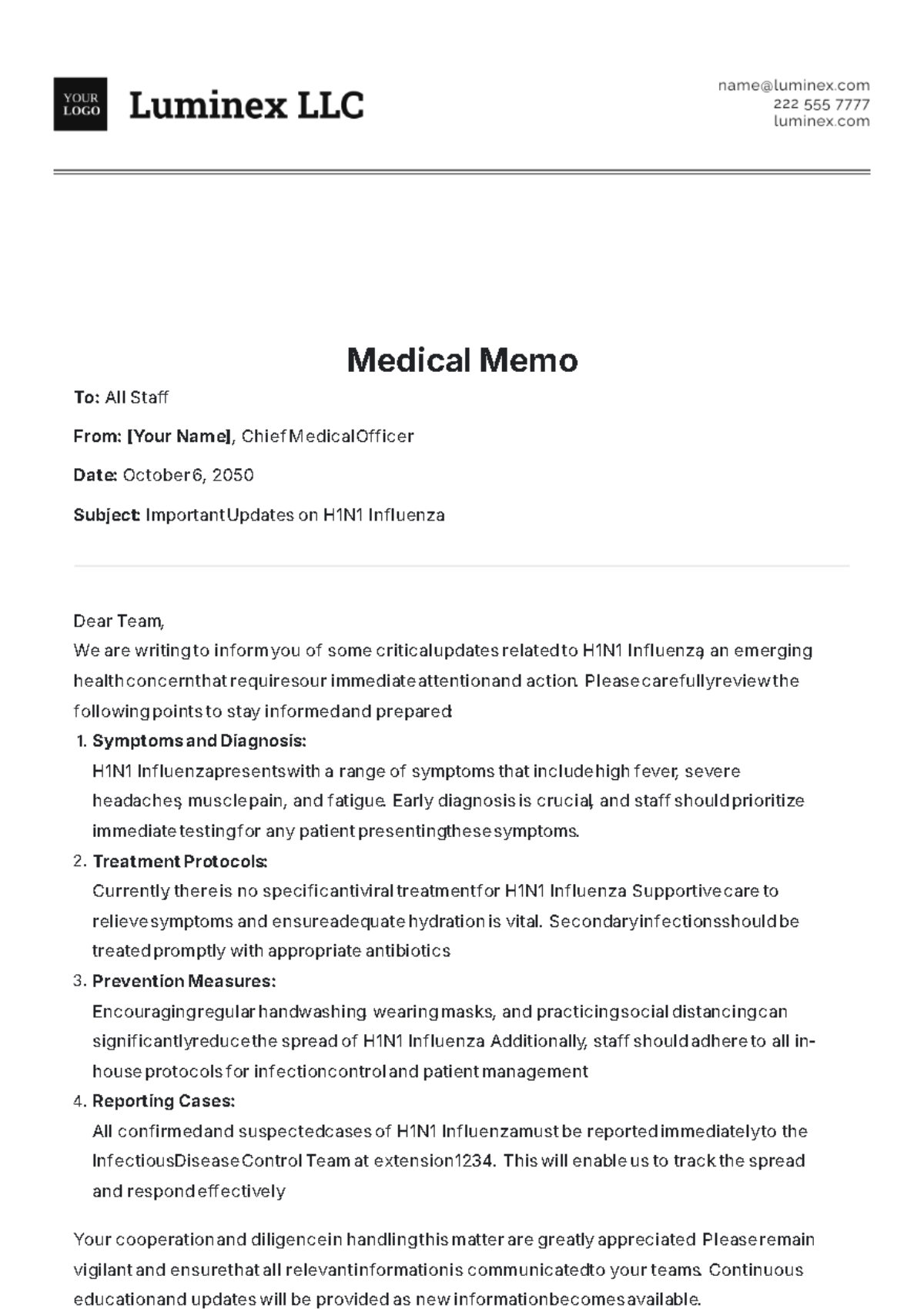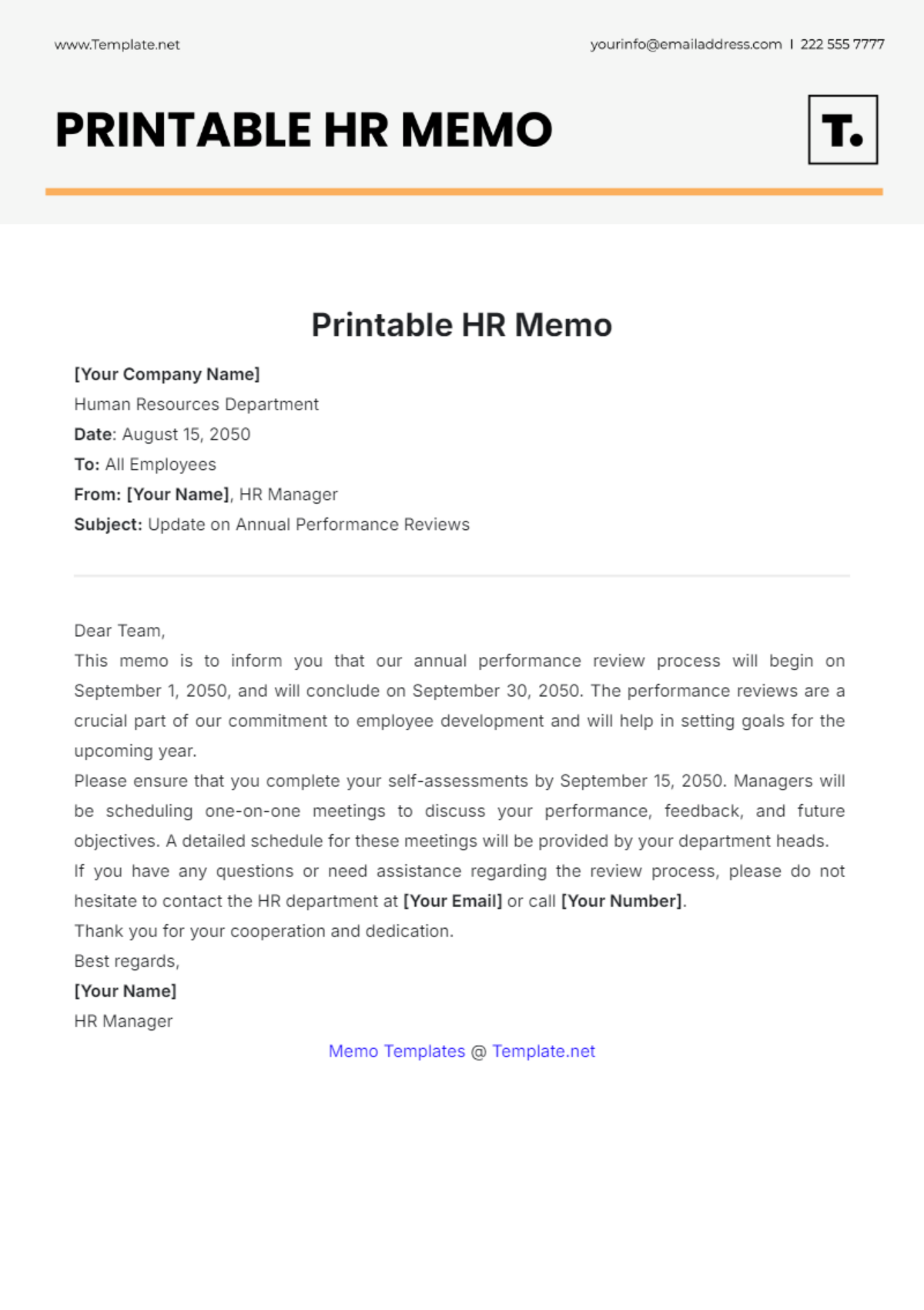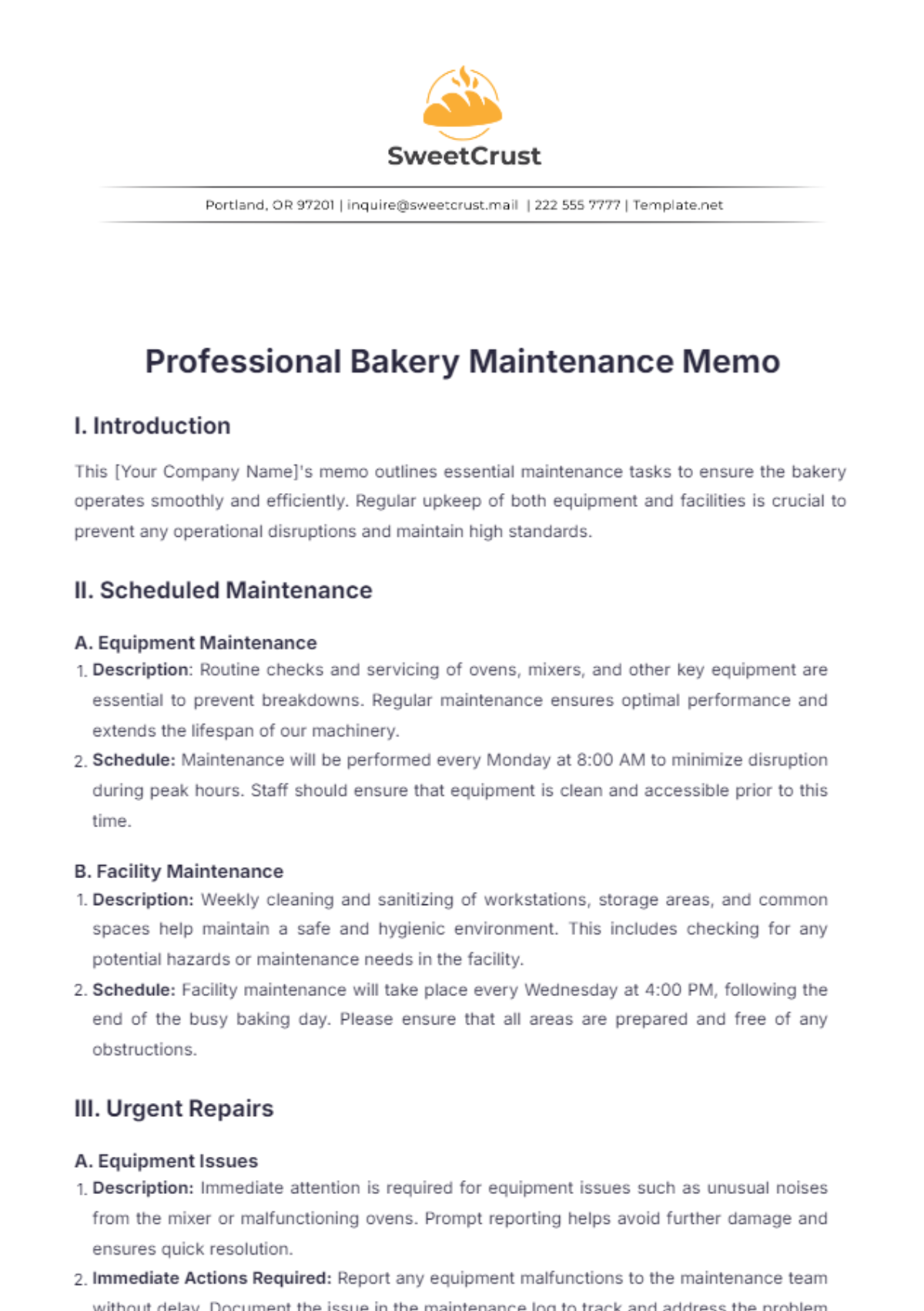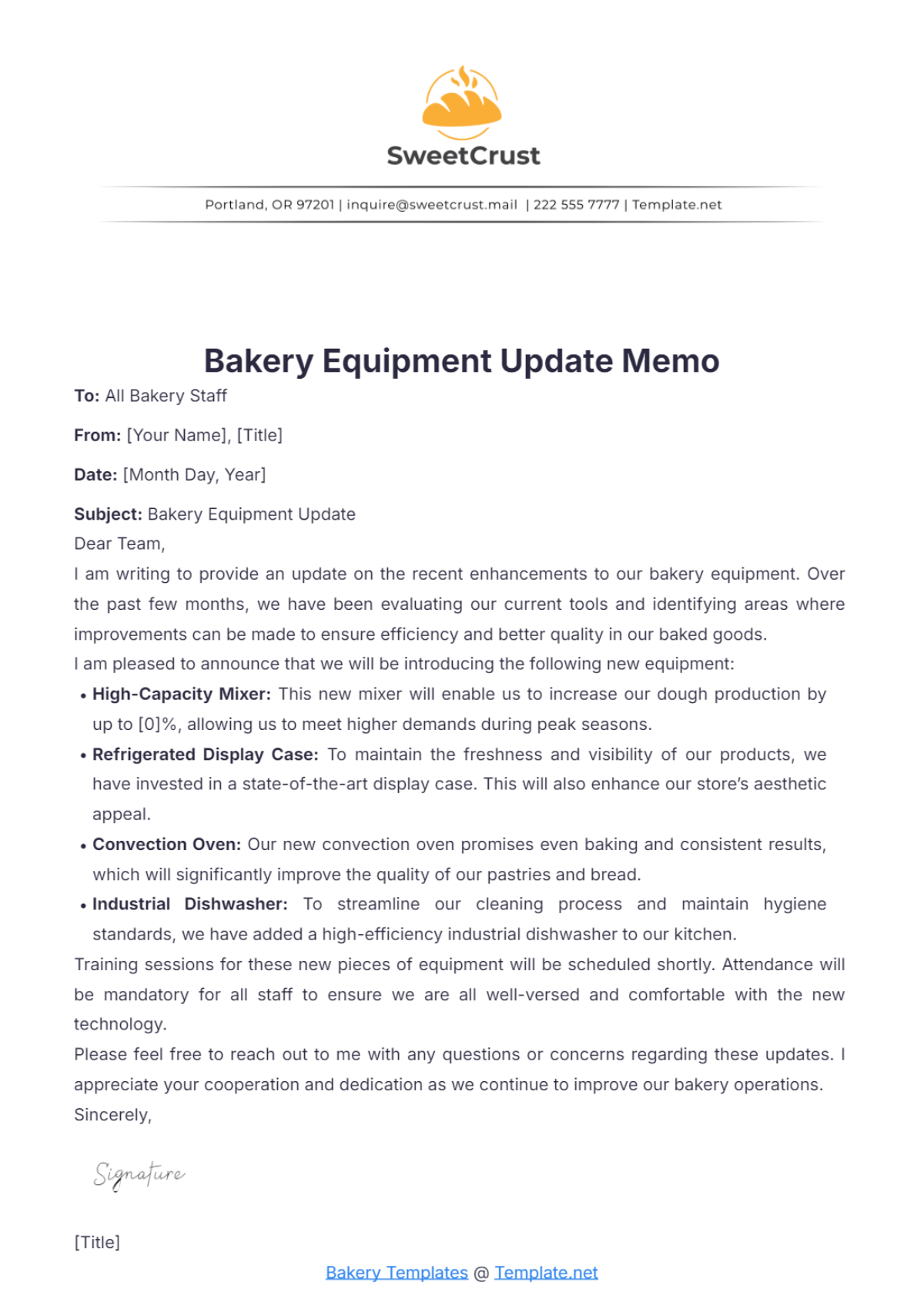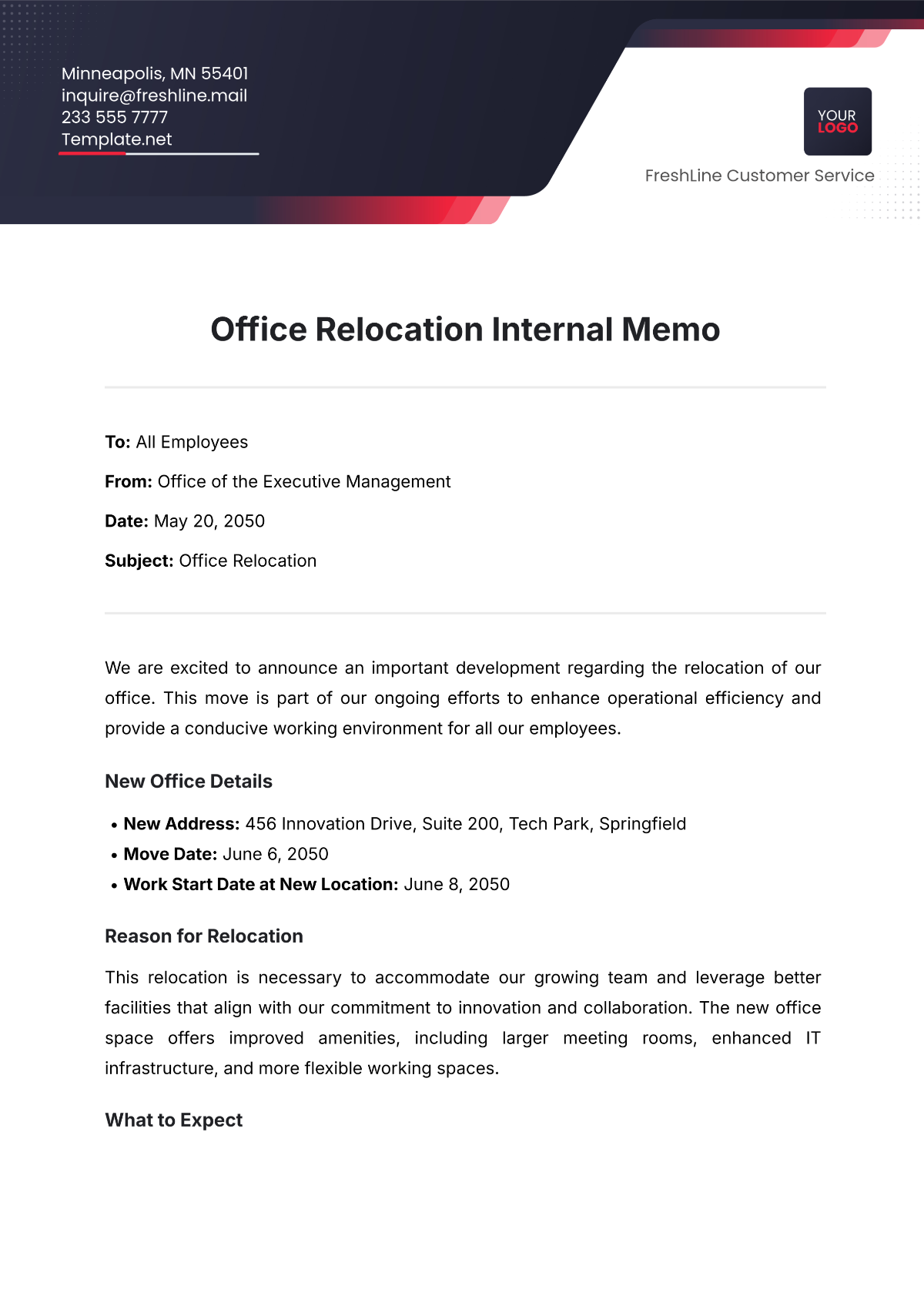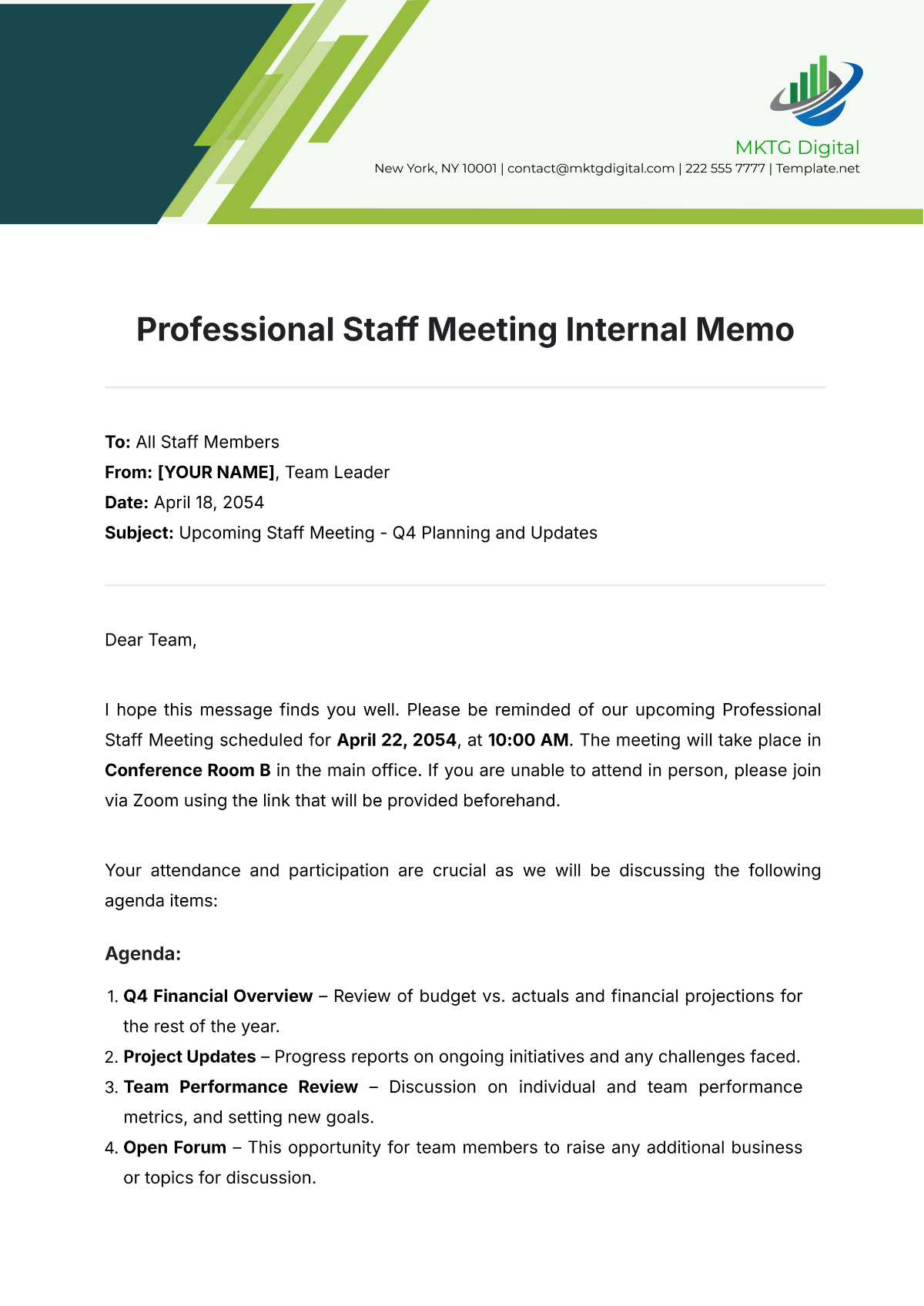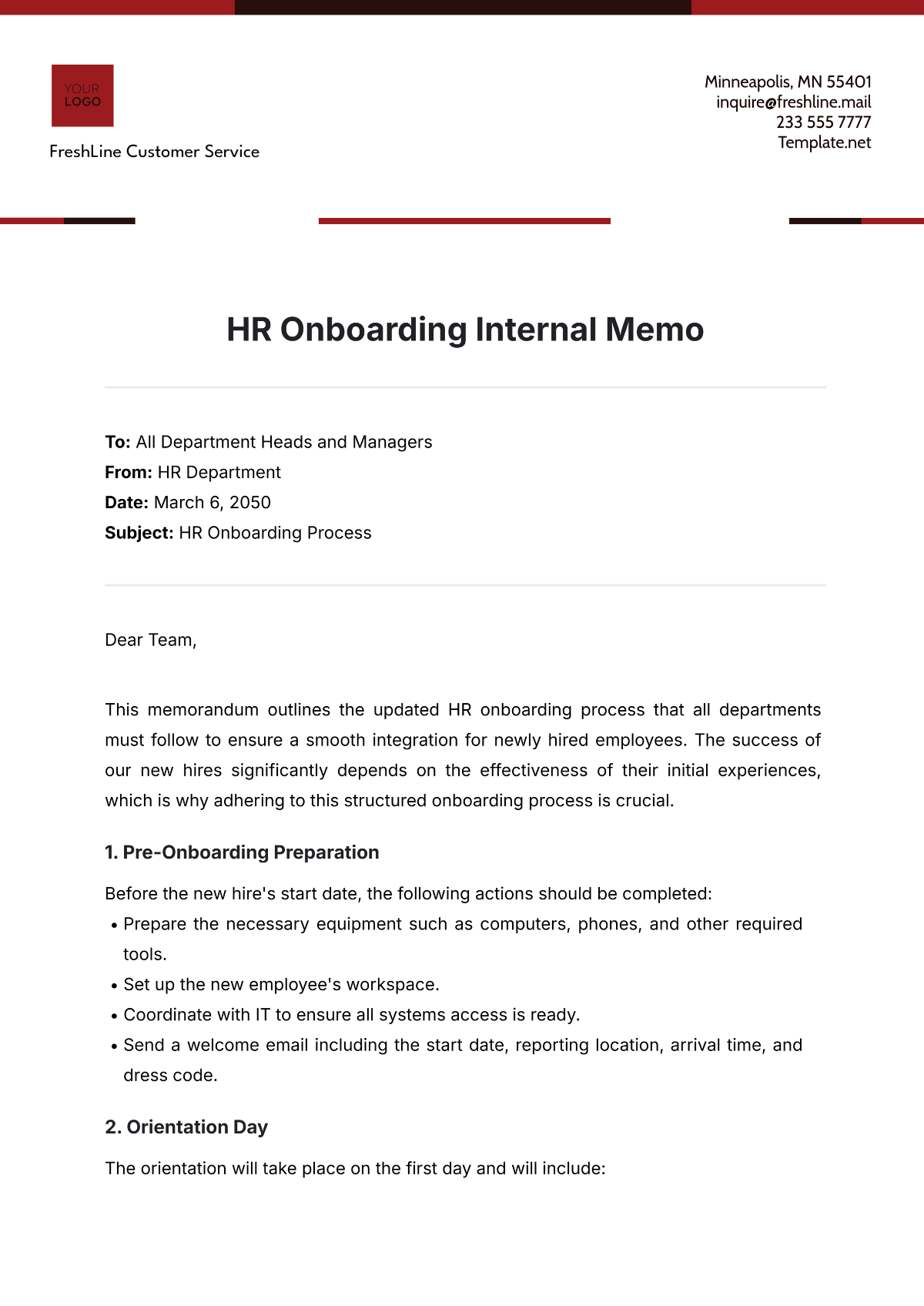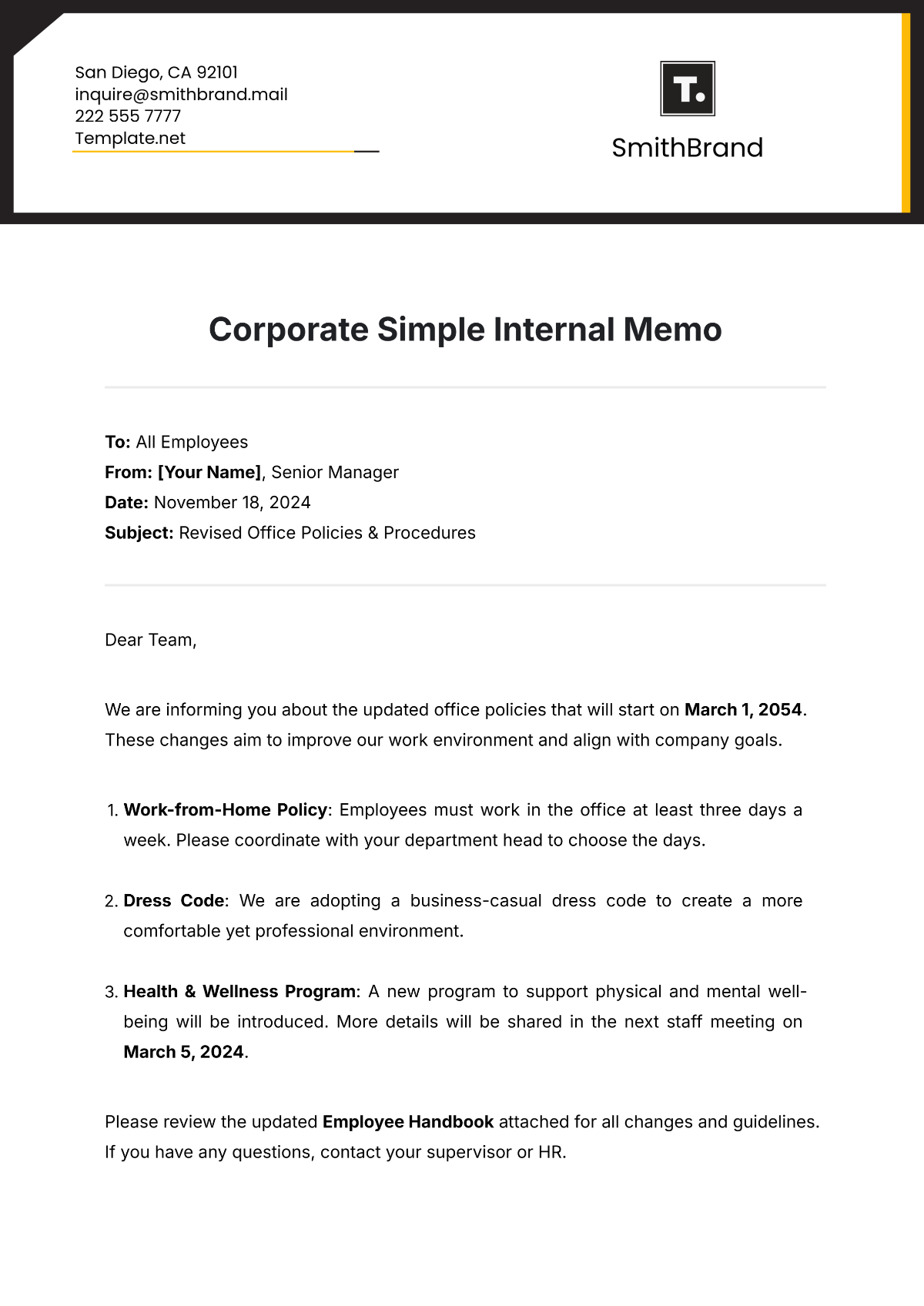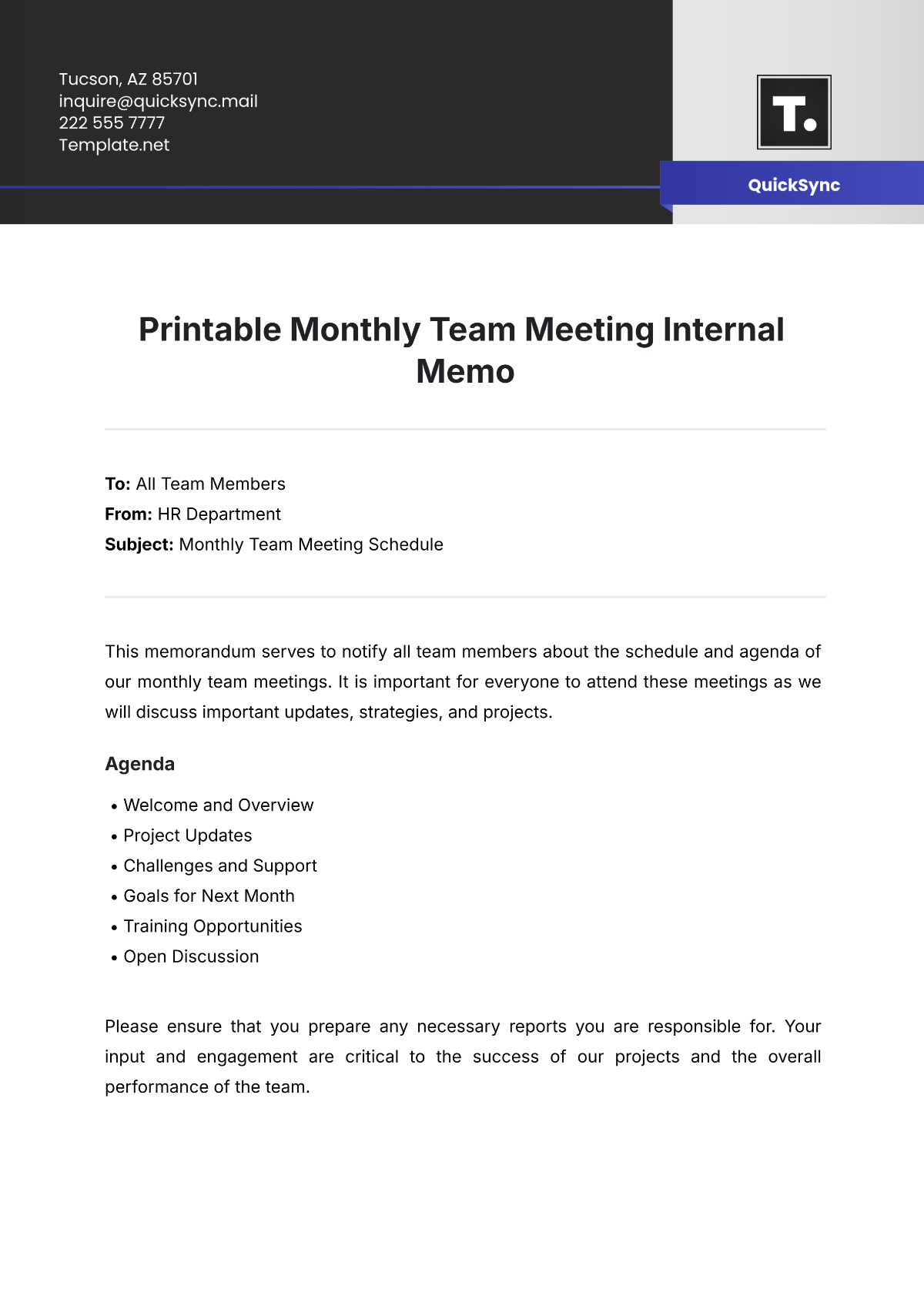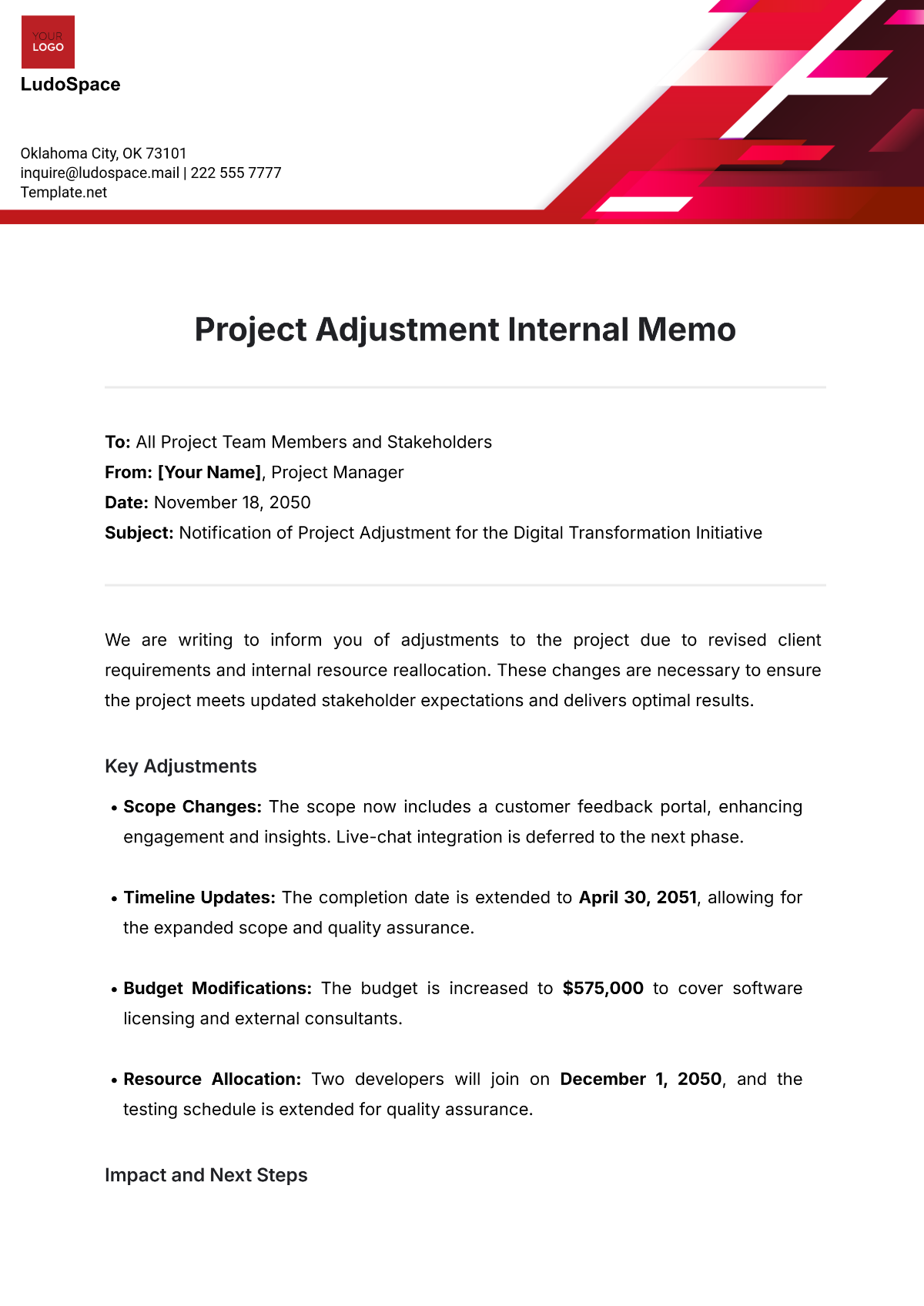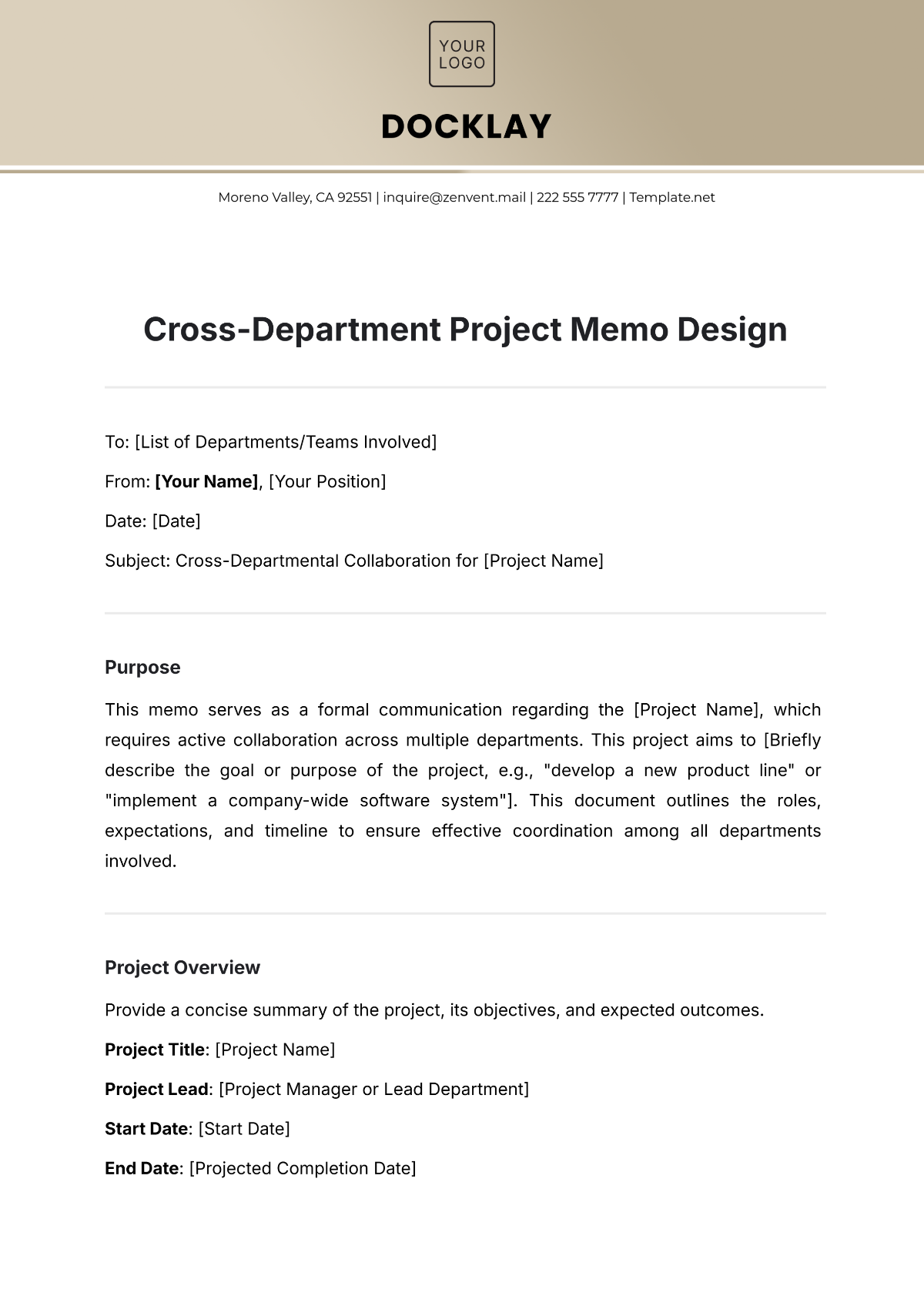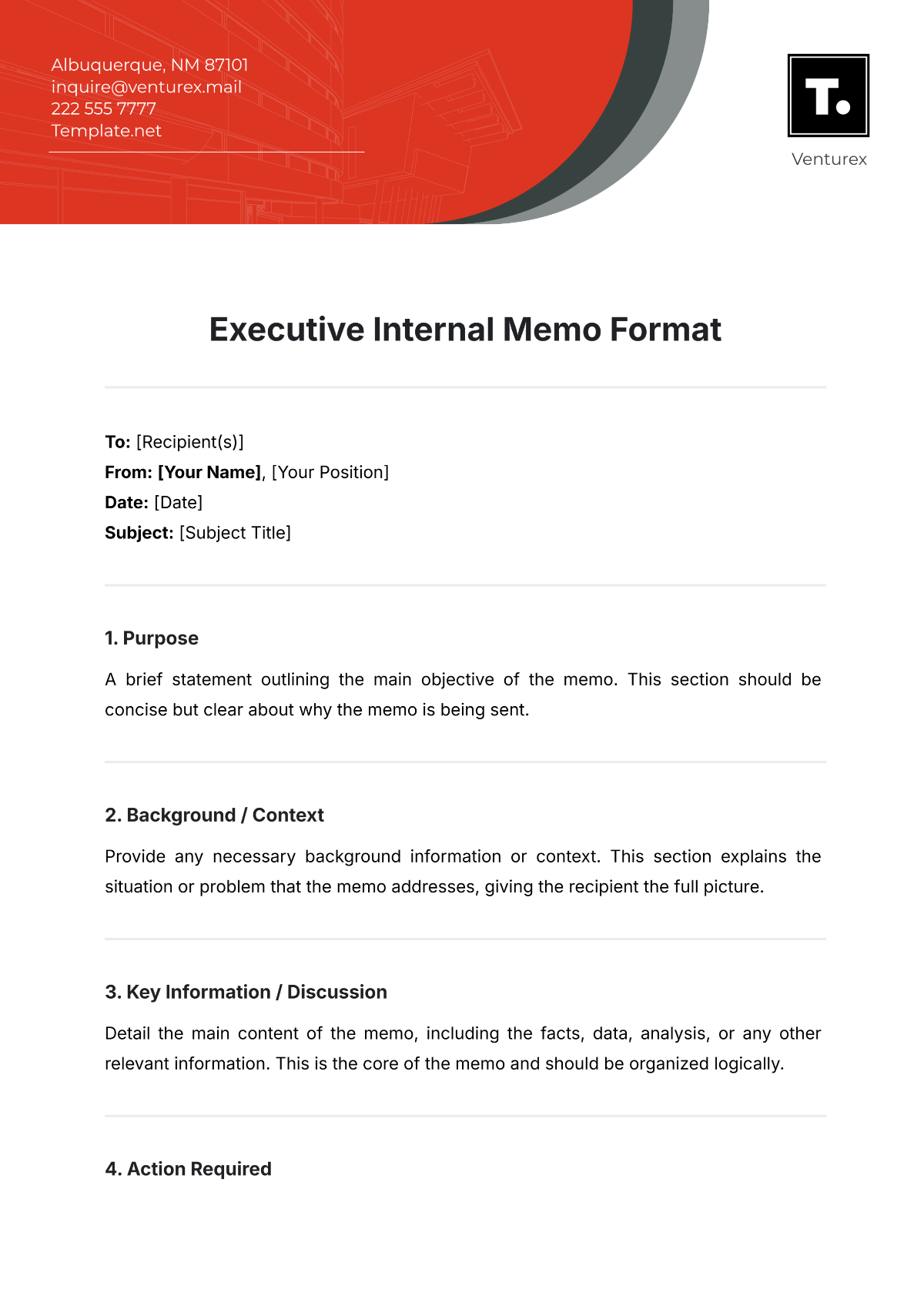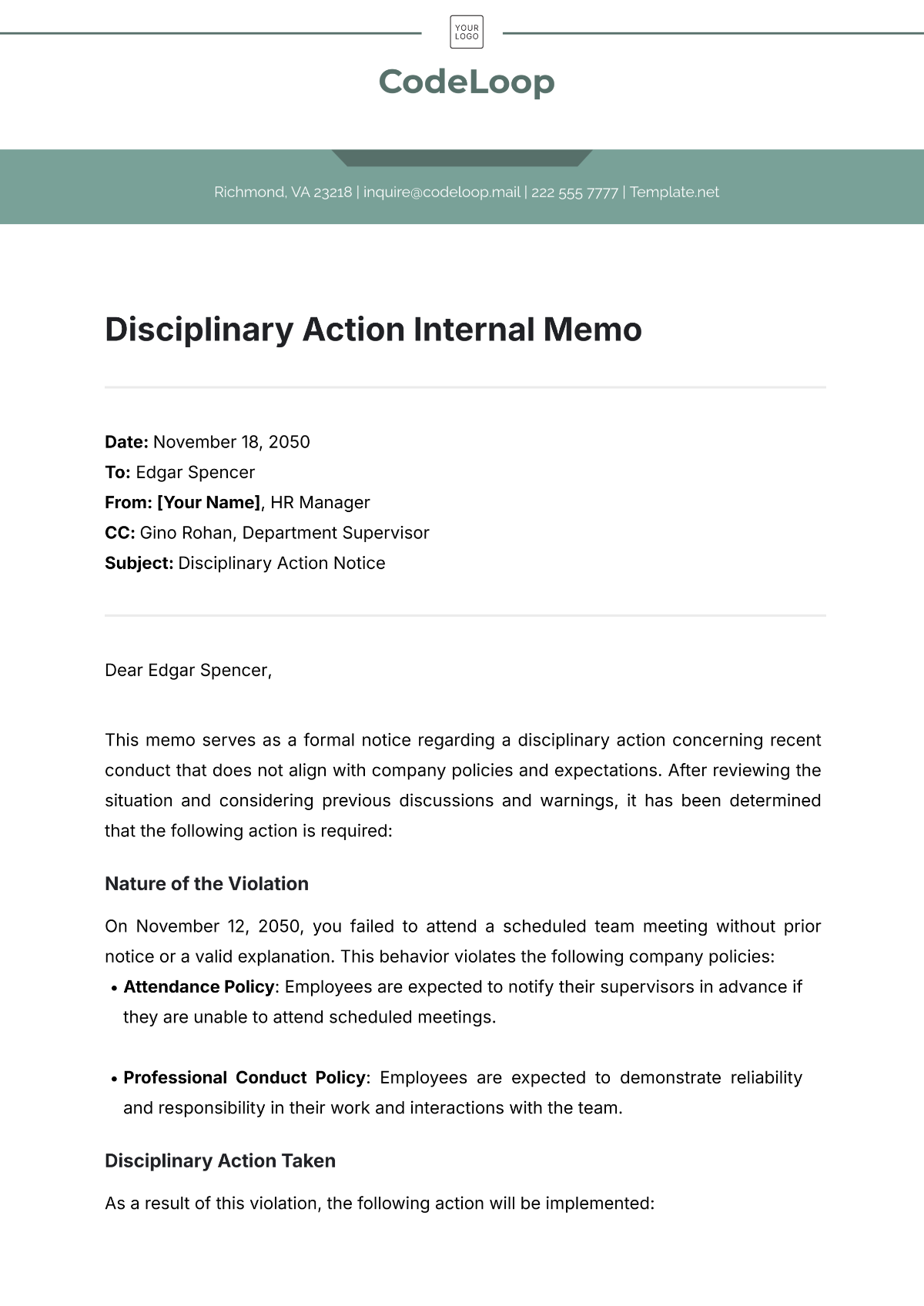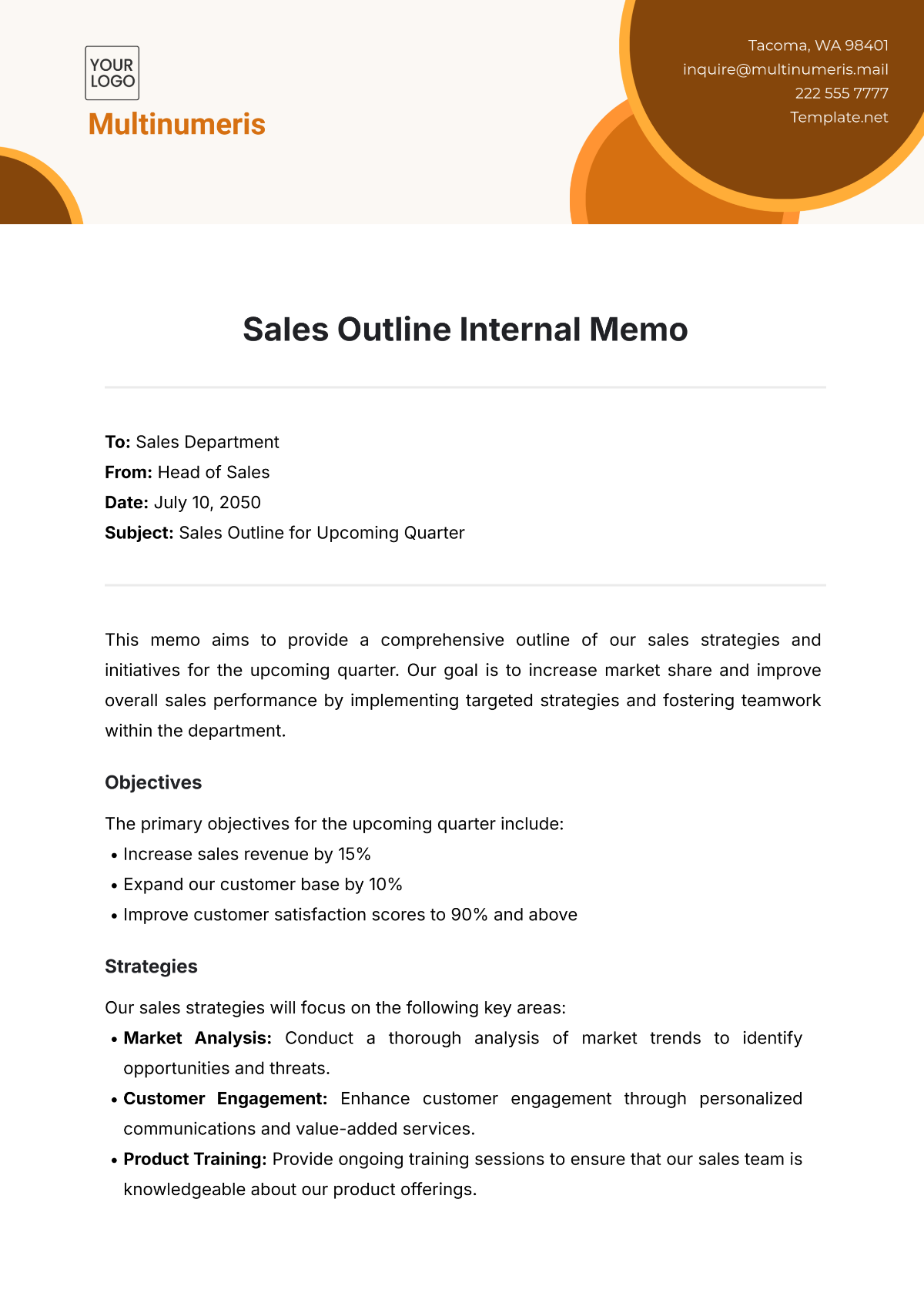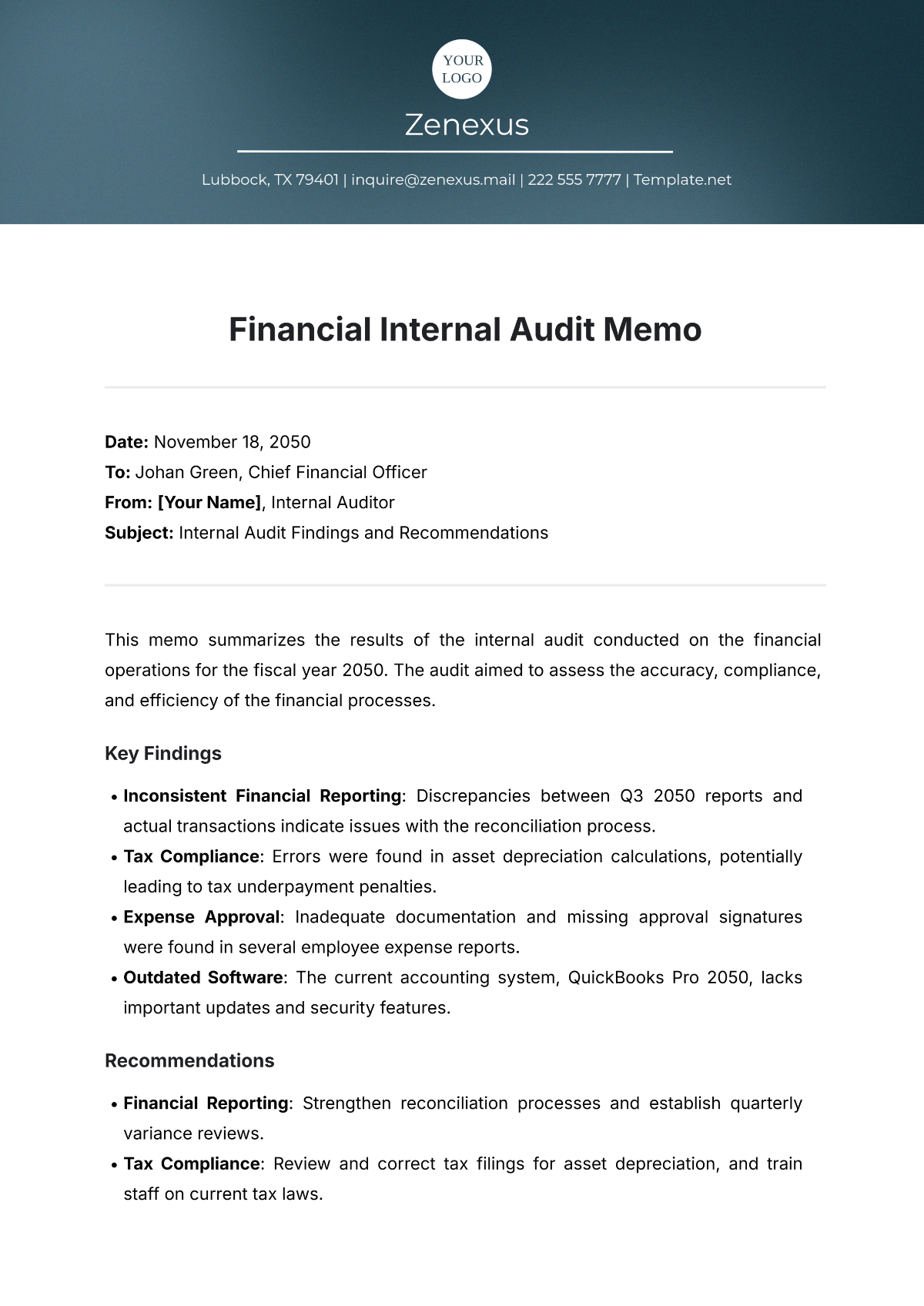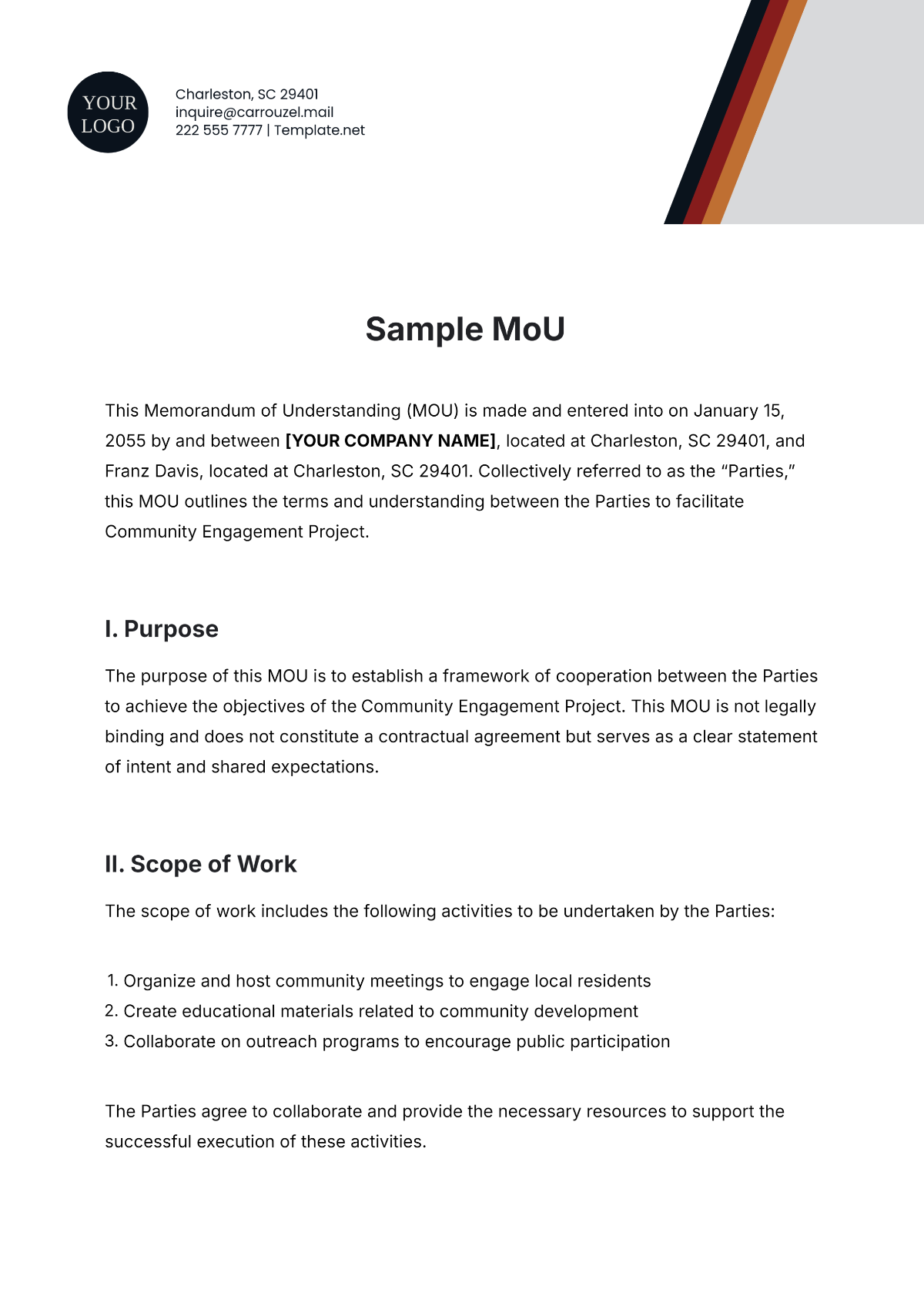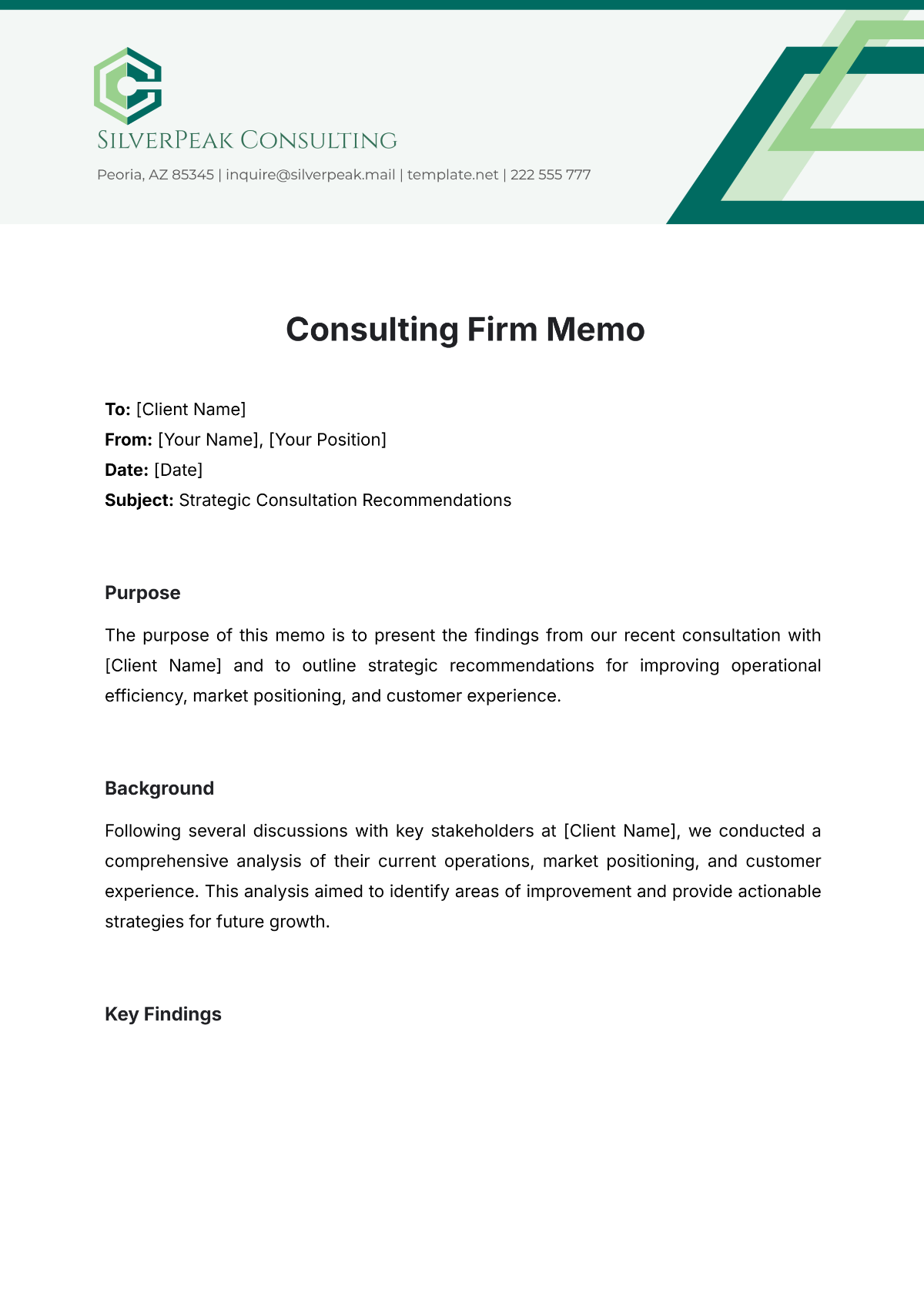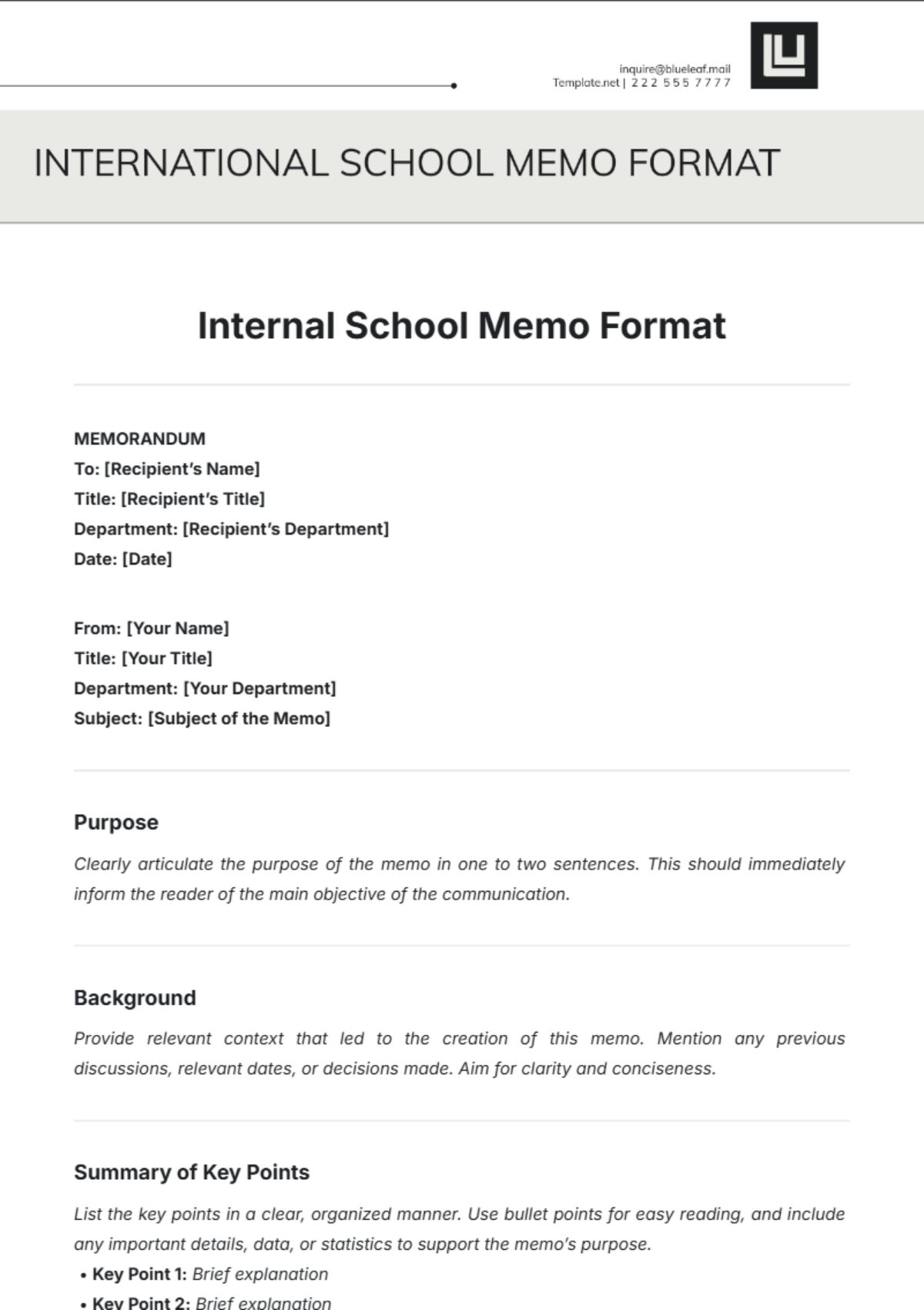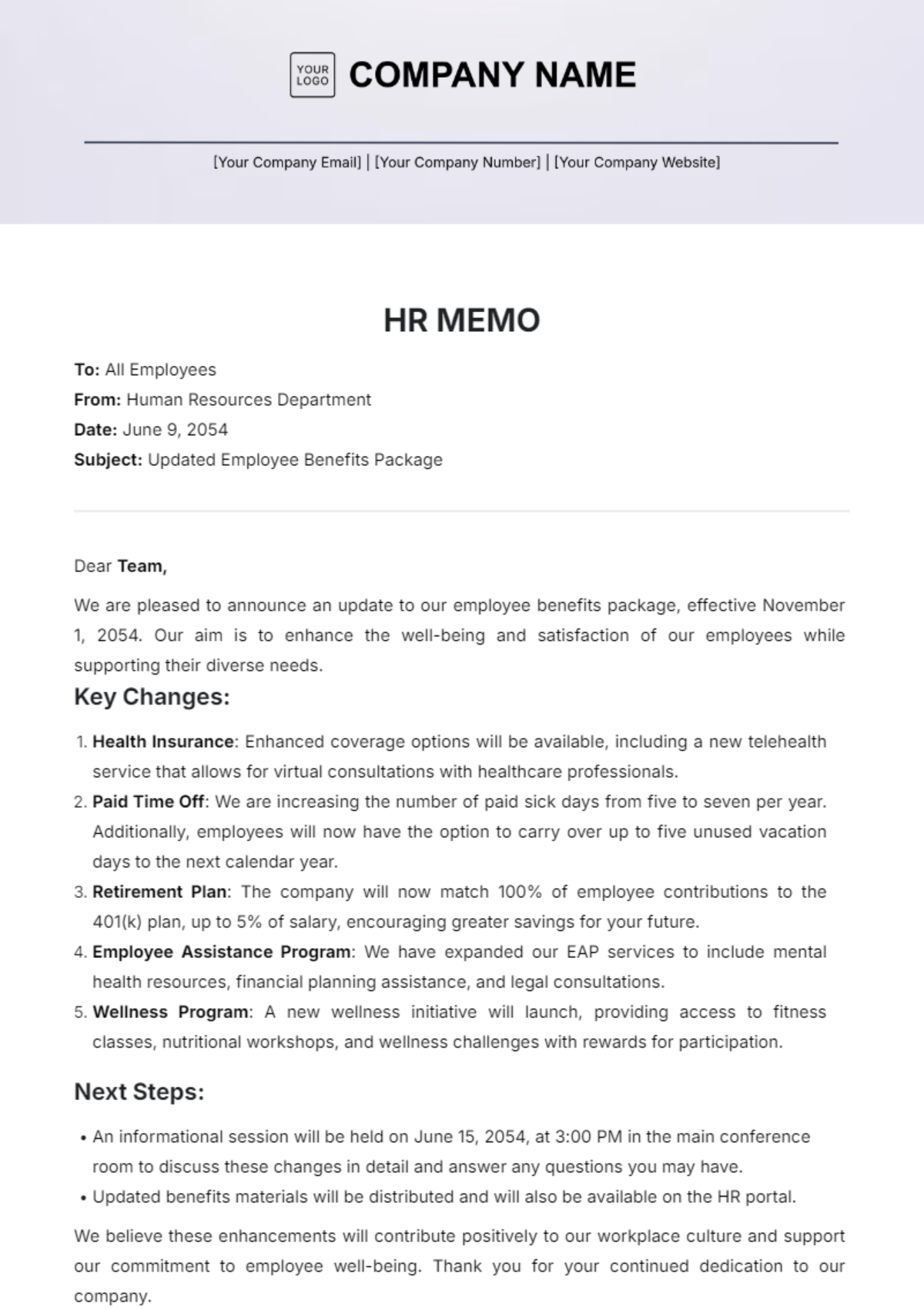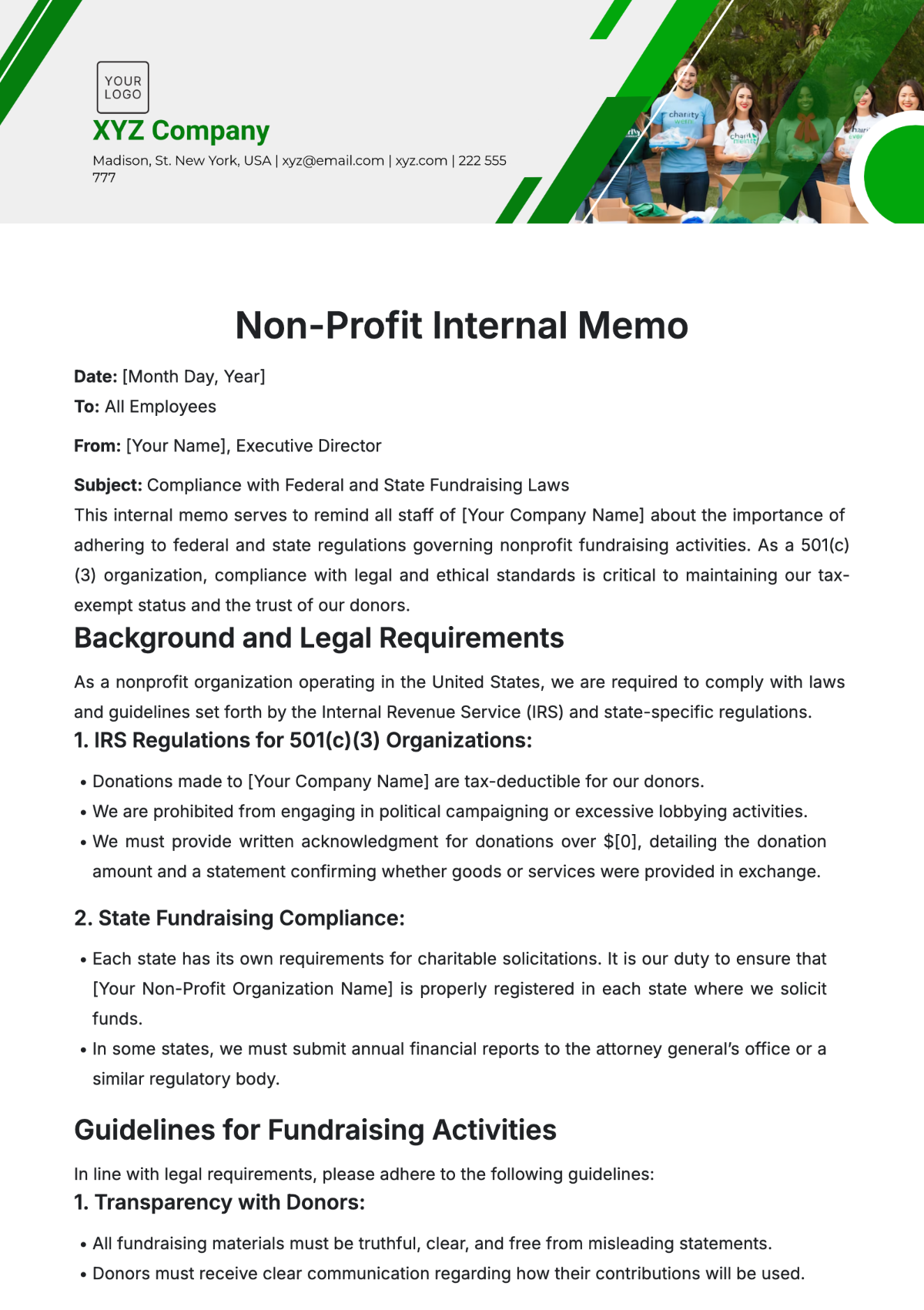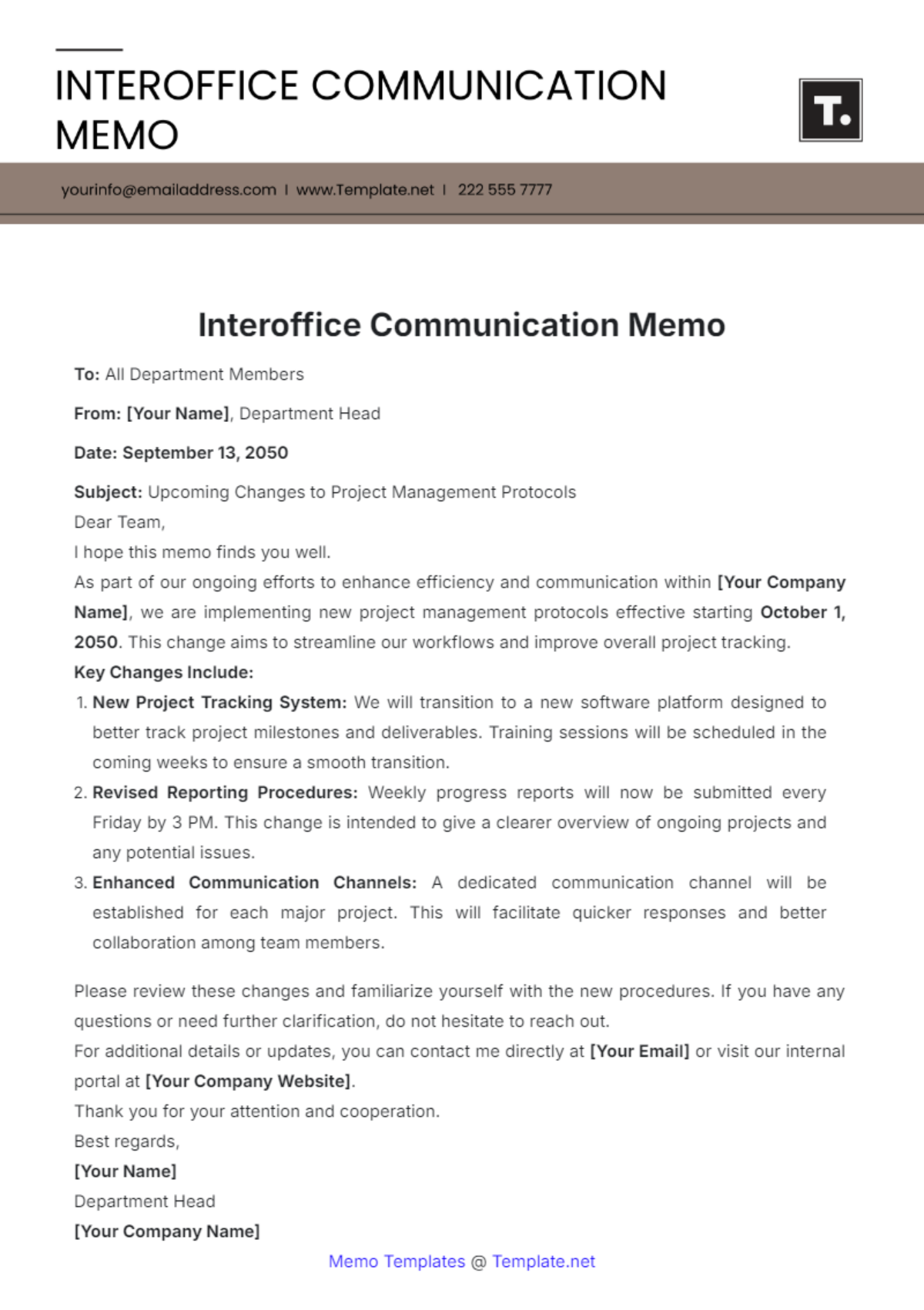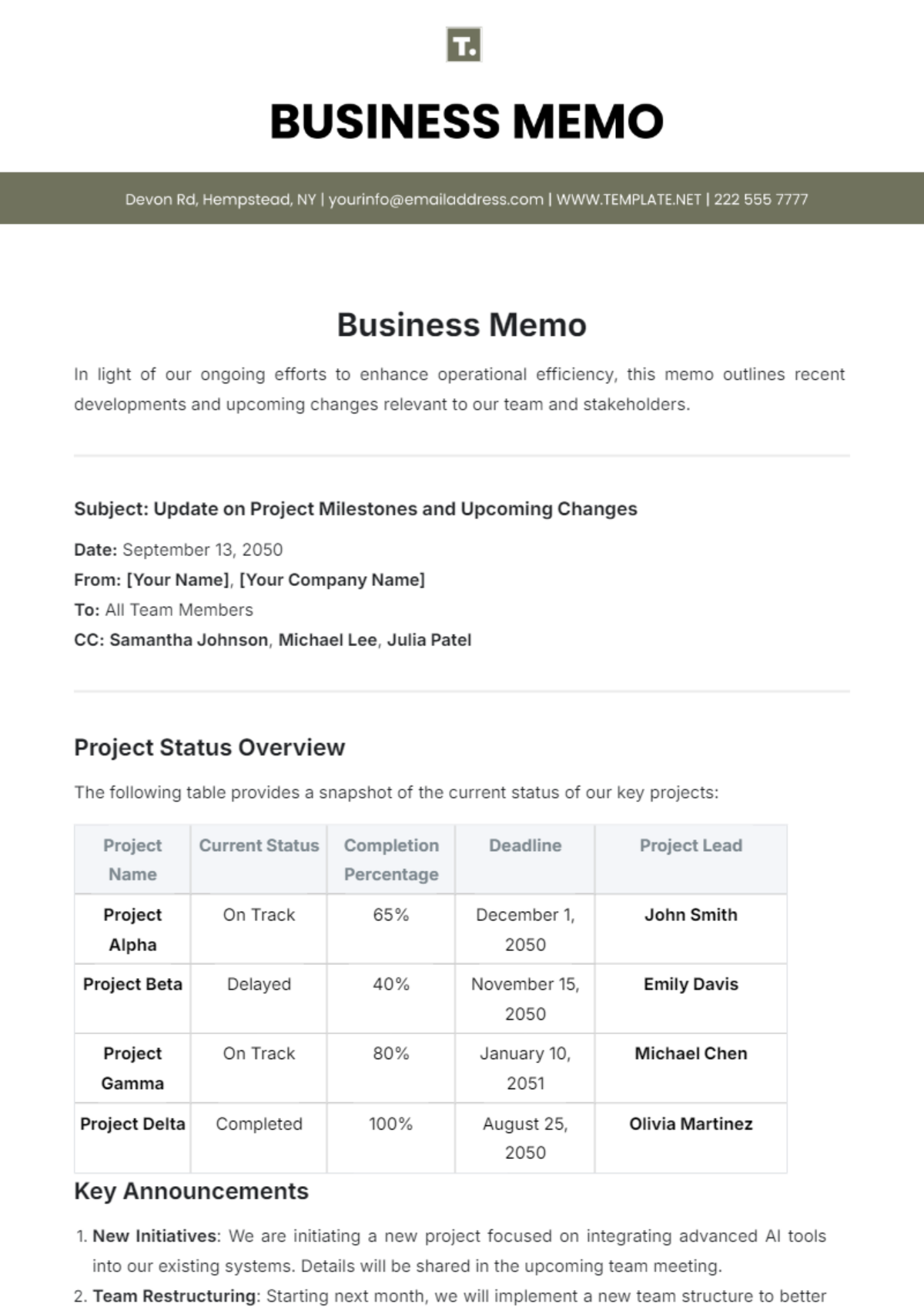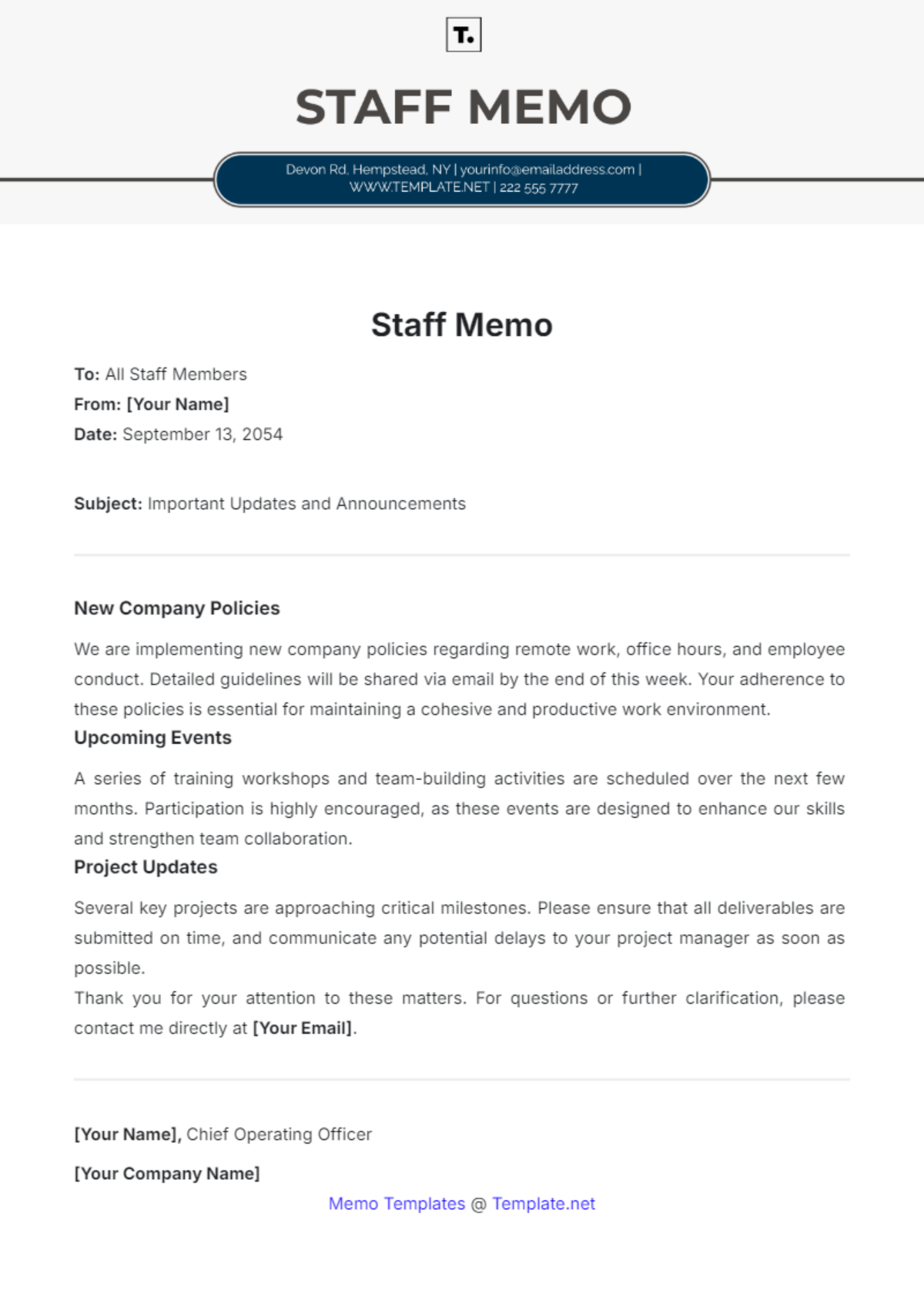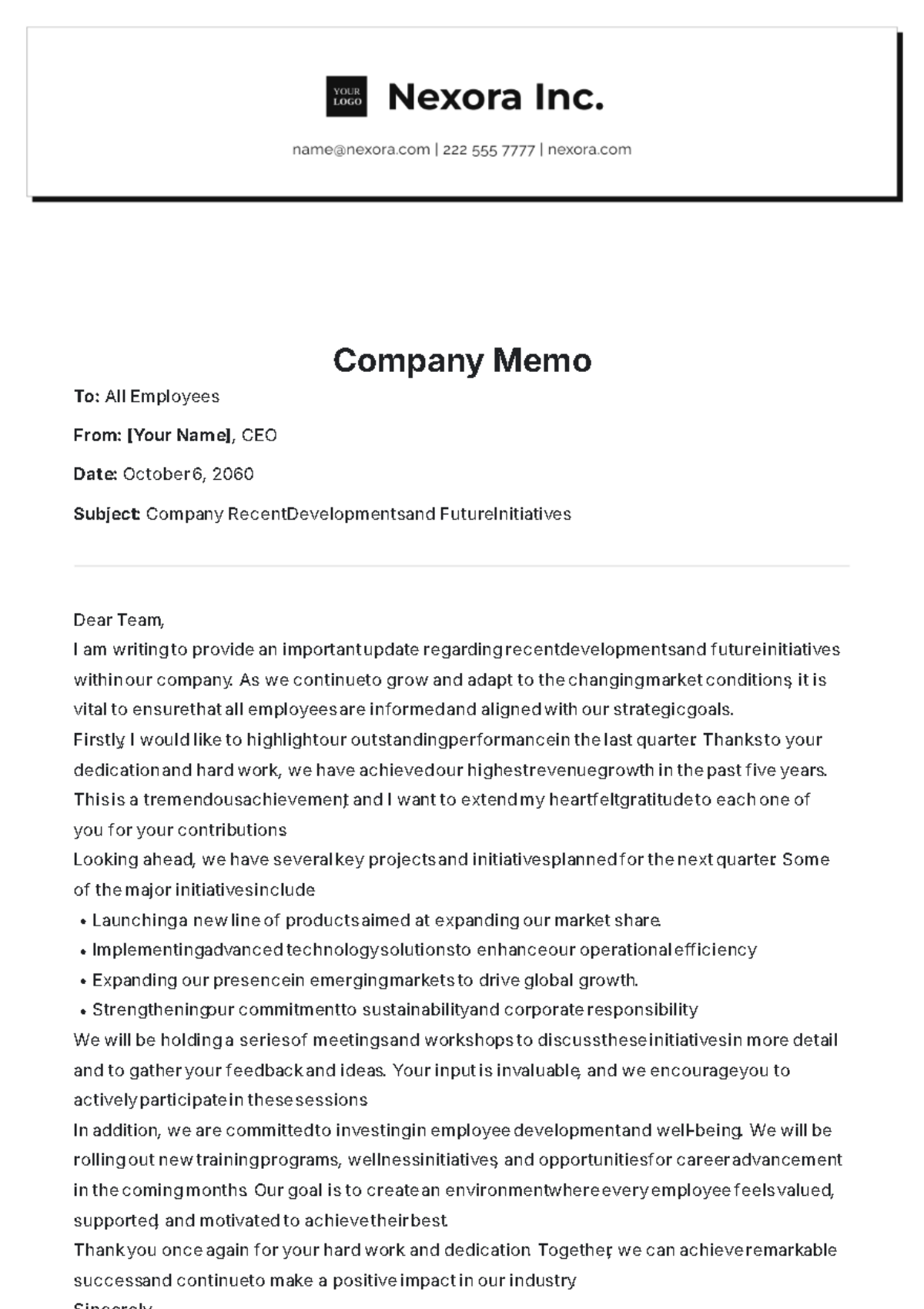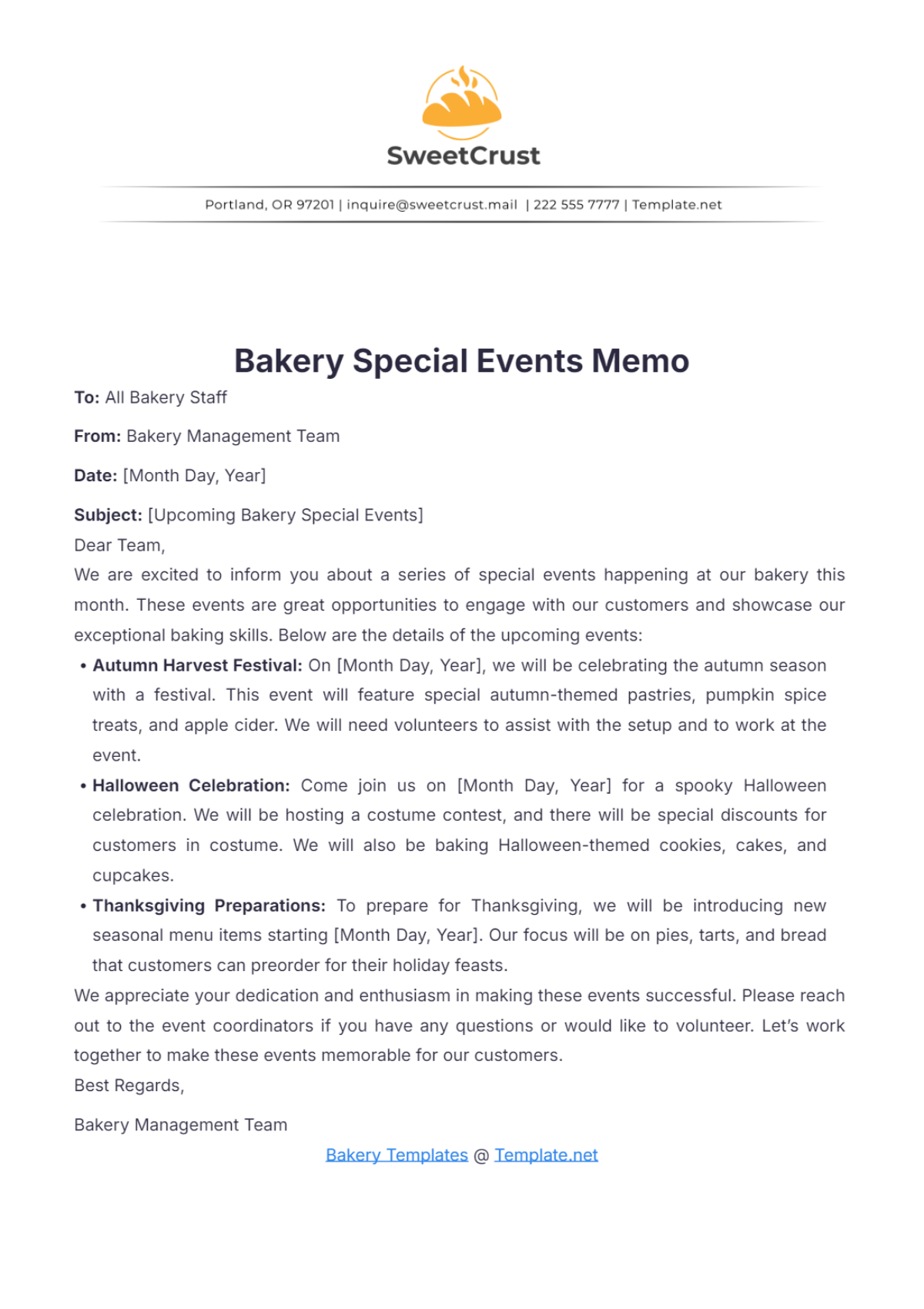Free Internal Memo Audit Template
Internal Memo Audit
To: Senior Management Team
From: Internal Audit Team
Date: November 18, 2054
Subject: Internal Audit Findings and Recommendations
This memo presents the findings from the recent internal audit conducted within the organization. The objective of the audit was to evaluate operational efficiency, and compliance with internal policies, and identify areas where improvements can be made. The audit period covered January 2054 through October 2054 and focused on the finance, procurement, and inventory management departments. This report outlines the key findings, associated risks, and recommended corrective actions.
Audit Methodology
The audit was conducted using a combination of document reviews, interviews with relevant personnel, and data analysis. Key audit procedures included:
Document Review: Examination of internal policies, procedures, financial statements, and operational records.
Interviews: Discussions with department heads and staff members from the finance, procurement, and inventory management teams to gather insights on practices and challenges.
Data Analysis: Analysis of financial data, performance metrics, and compliance reports to assess accuracy and alignment with organizational goals.
Key Findings
Compliance Issues
Finding: Some procurement transactions were processed without proper internal approval, including high-value purchases.
Risk: This can lead to financial mismanagement, fraud, and non-compliance with regulations.
Recommendation: Strengthen approval processes, provide compliance training, and update policies for large purchases.
Operational Efficiency
Finding: Employee expense reports were delayed, with processing times exceeding the standard.
Risk: Delays may disrupt cash flow, hinder financial forecasting, and delay reimbursements.
Recommendation: Implement an automated system for expense reporting, streamline processes, and set stricter approval deadlines.
Inventory Management
Finding: Discrepancies were found between physical and recorded inventory levels.
Risk: Mismatches could lead to overstocking, understocking, and loss of assets.
Recommendation: Conduct regular inventory audits and adopt a real-time inventory management system.
Financial Reporting
Finding: Financial reports were submitted late, impacting transparency.
Risk: Late reporting affects decision-making and could damage stakeholder confidence.
Recommendation: Set firm reporting deadlines, establish accountability, and designate a reporting coordinator.
Conclusion
The audit has identified several key areas for improvement within the organization. Addressing these issues will help mitigate risks, enhance operational efficiency, and ensure better compliance with internal and external regulations. We recommend immediate implementation of the proposed corrective actions and suggest that further audits be scheduled quarterly to monitor progress.
Next Steps
Implementation Plan: A detailed action plan should be developed by department heads to address the identified issues by December 2054.
Follow-up Audit: Schedule a follow-up audit in March 2055 to evaluate the implementation of corrective actions and review improvements in compliance and efficiency.
Regular Monitoring: Establish a continuous monitoring system to ensure ongoing compliance and efficiency improvements, with monthly reporting to the senior leadership team.
Please let me know if further clarification is needed.
Best regards,
Internal Audit Team
